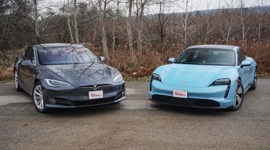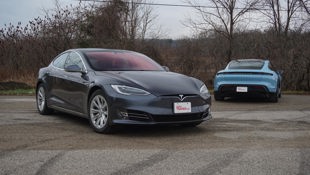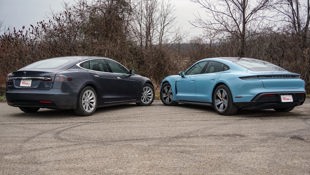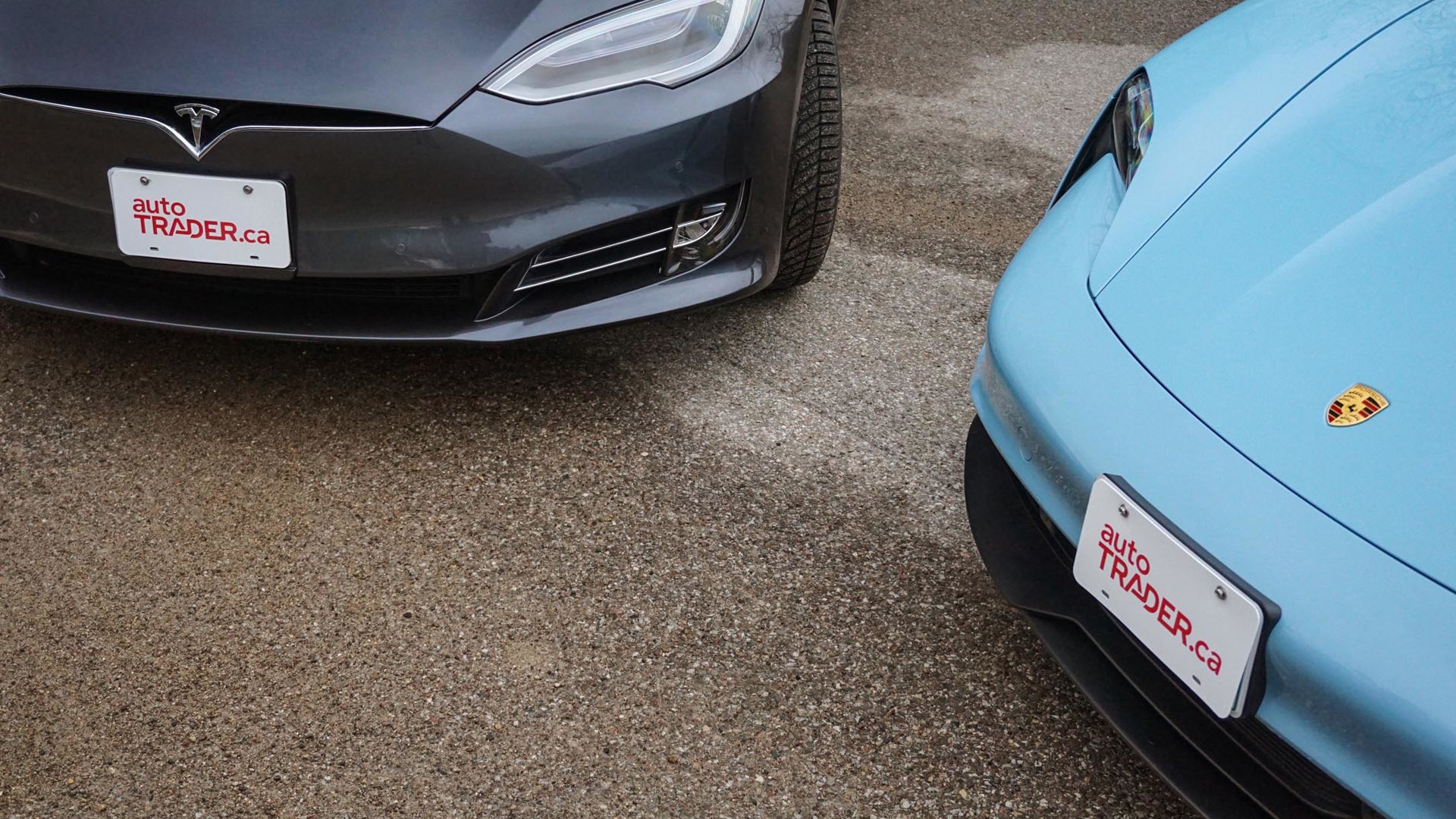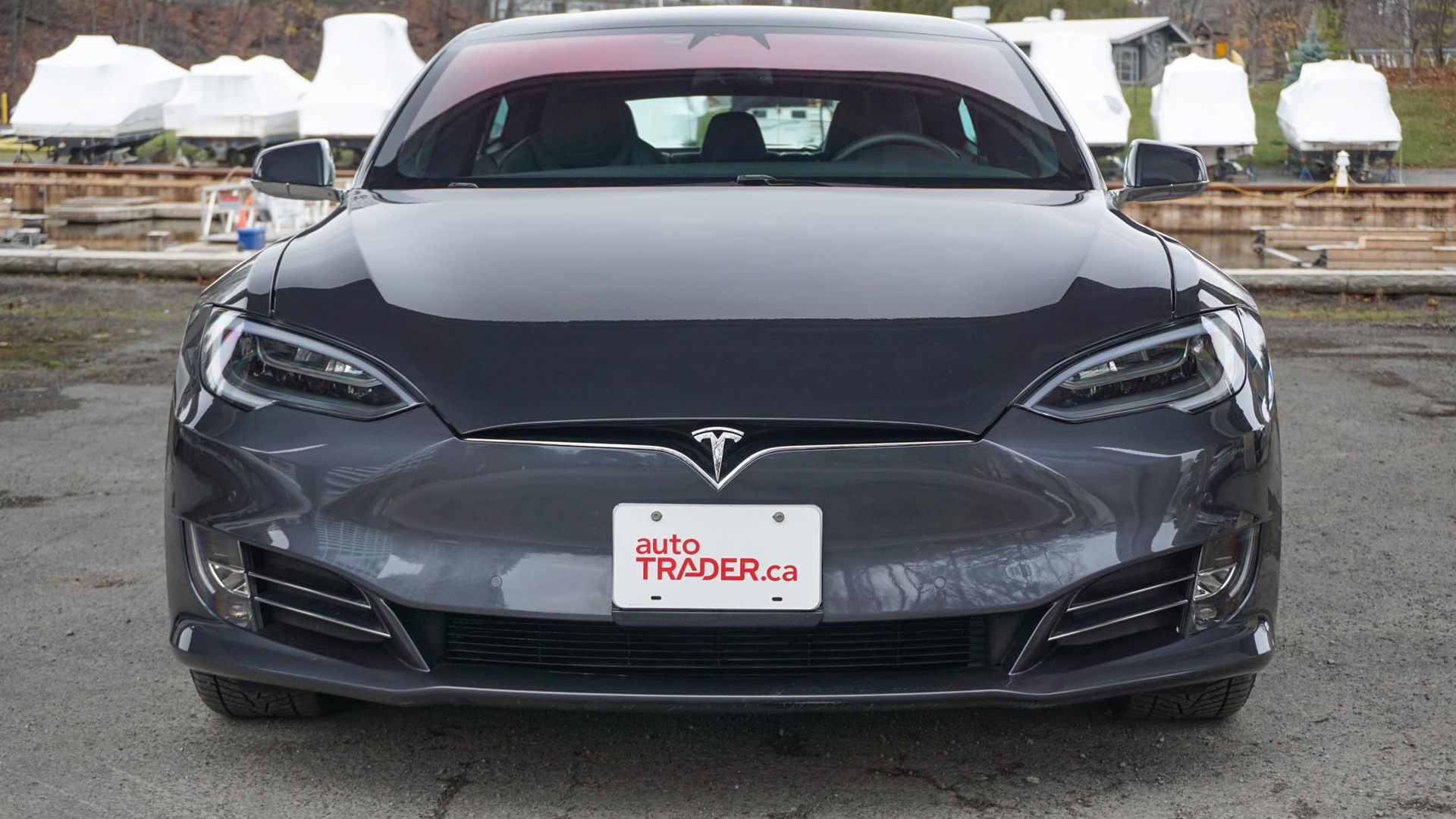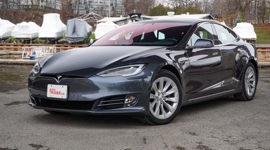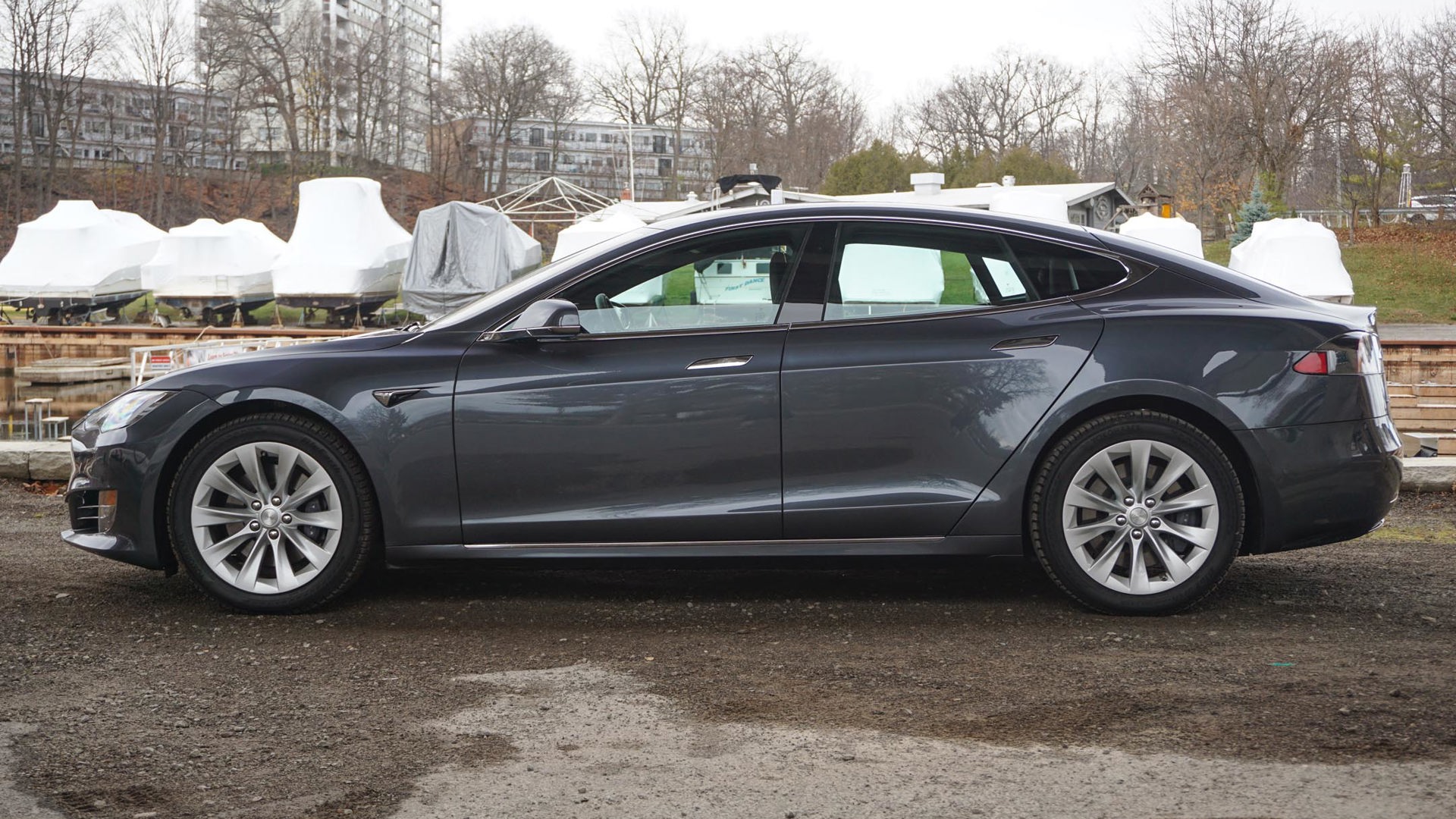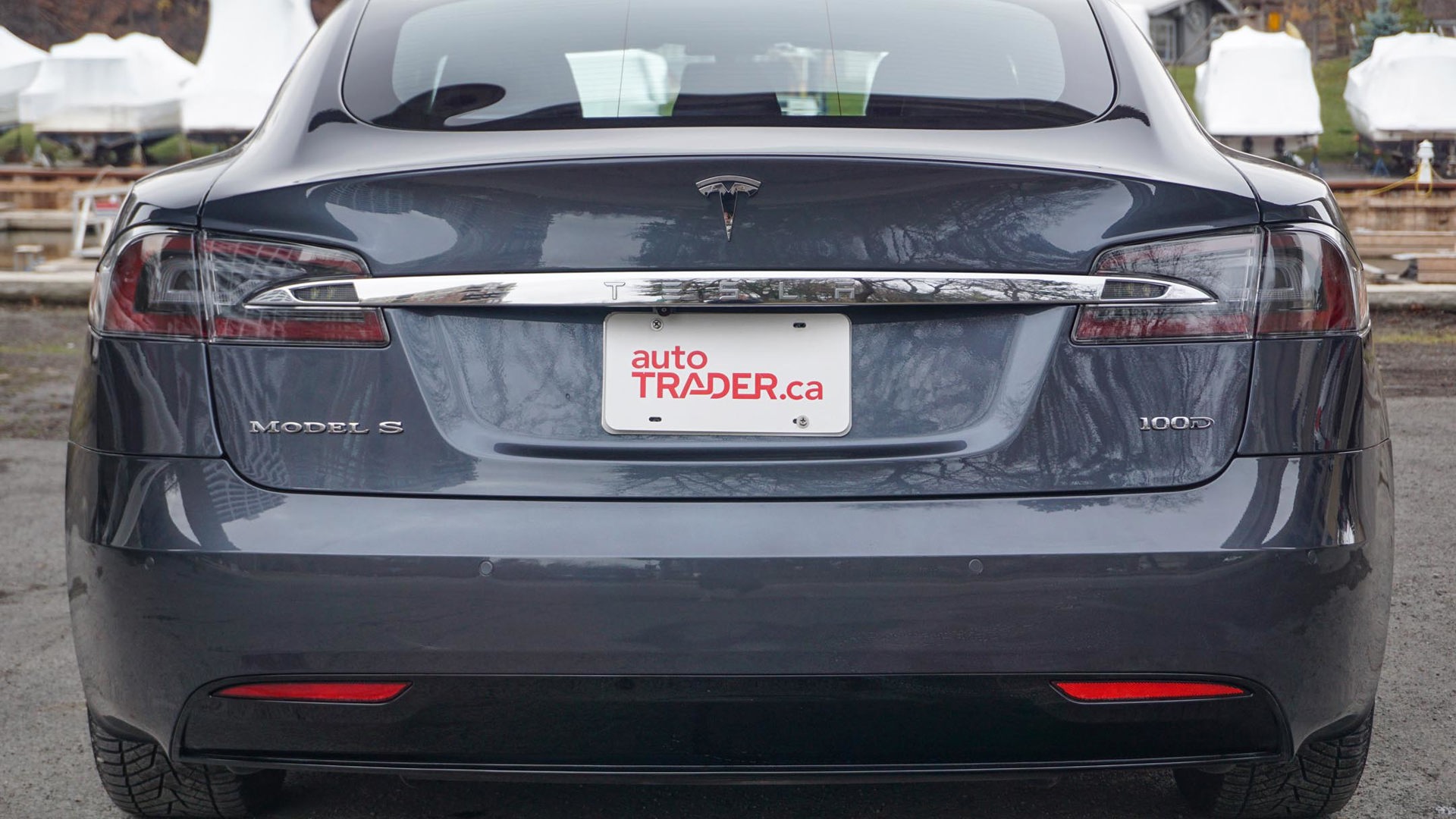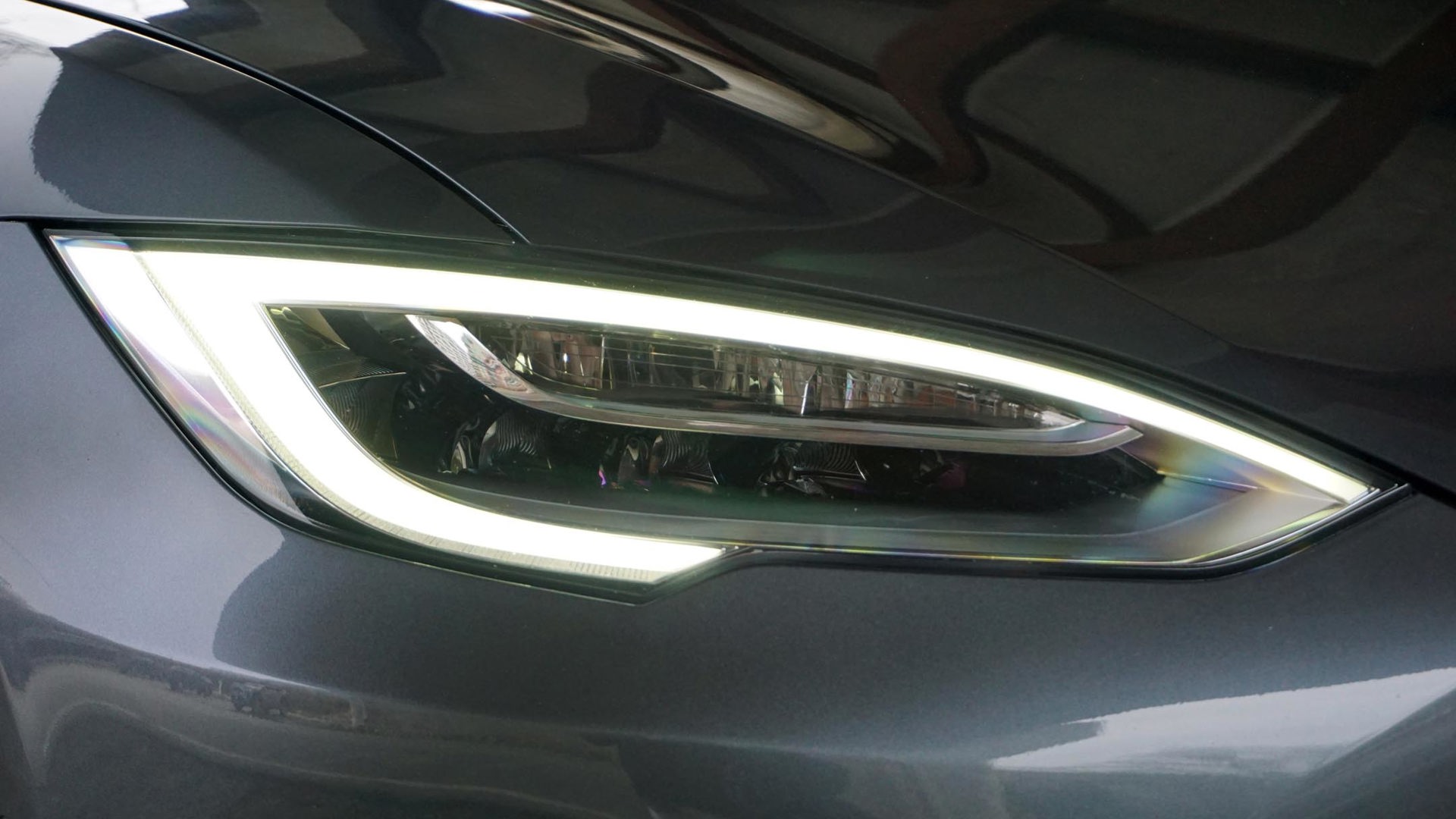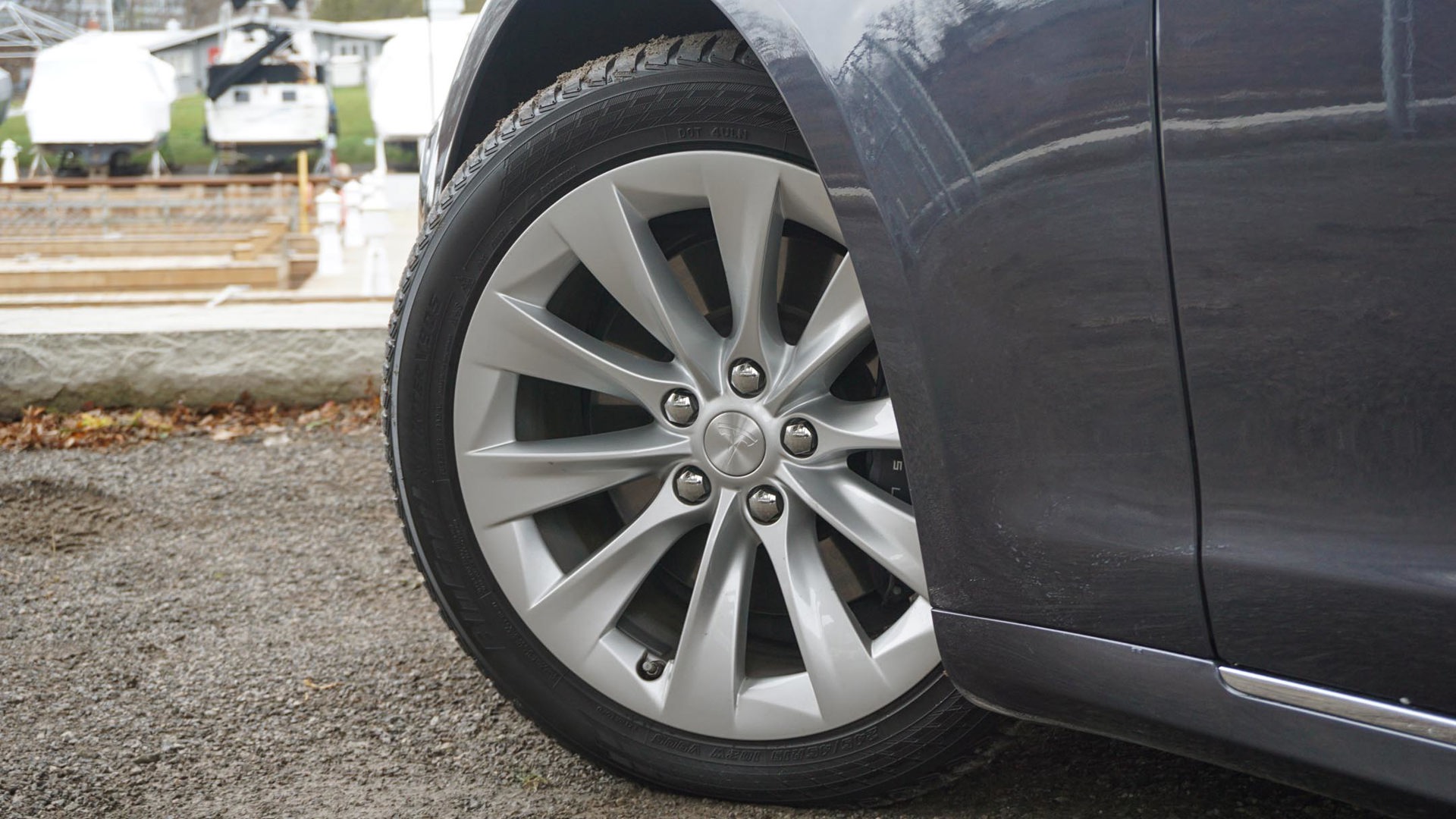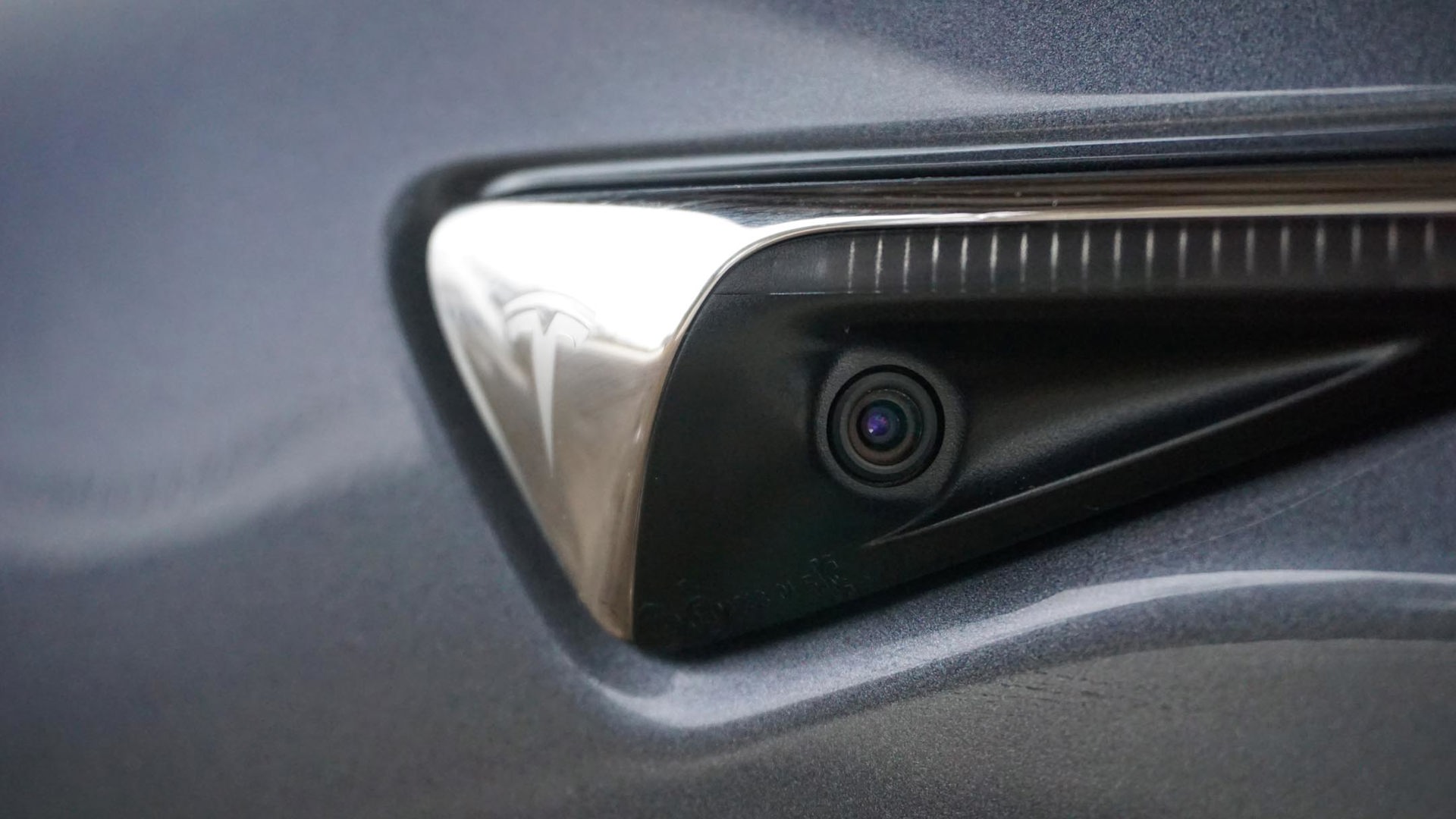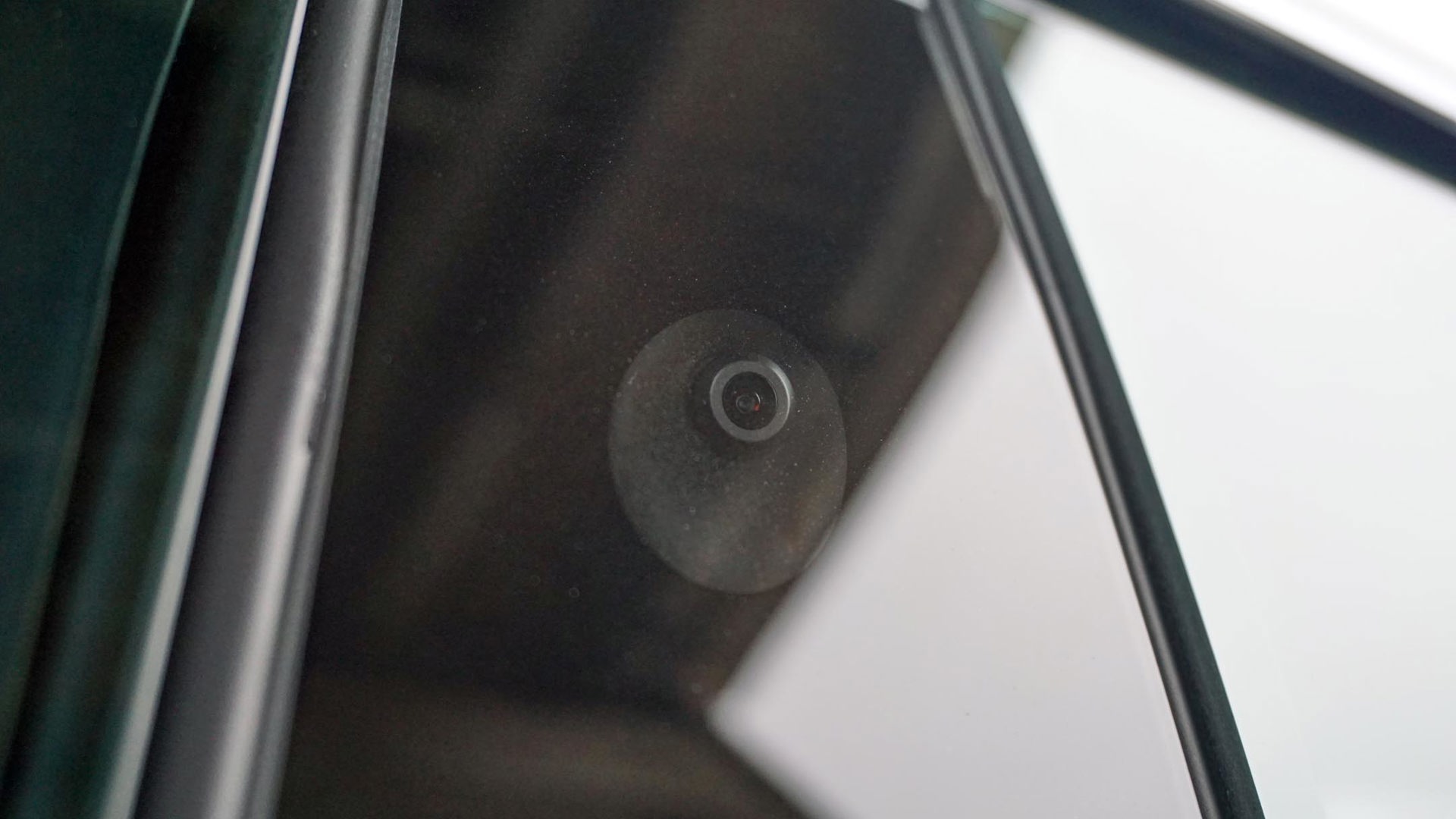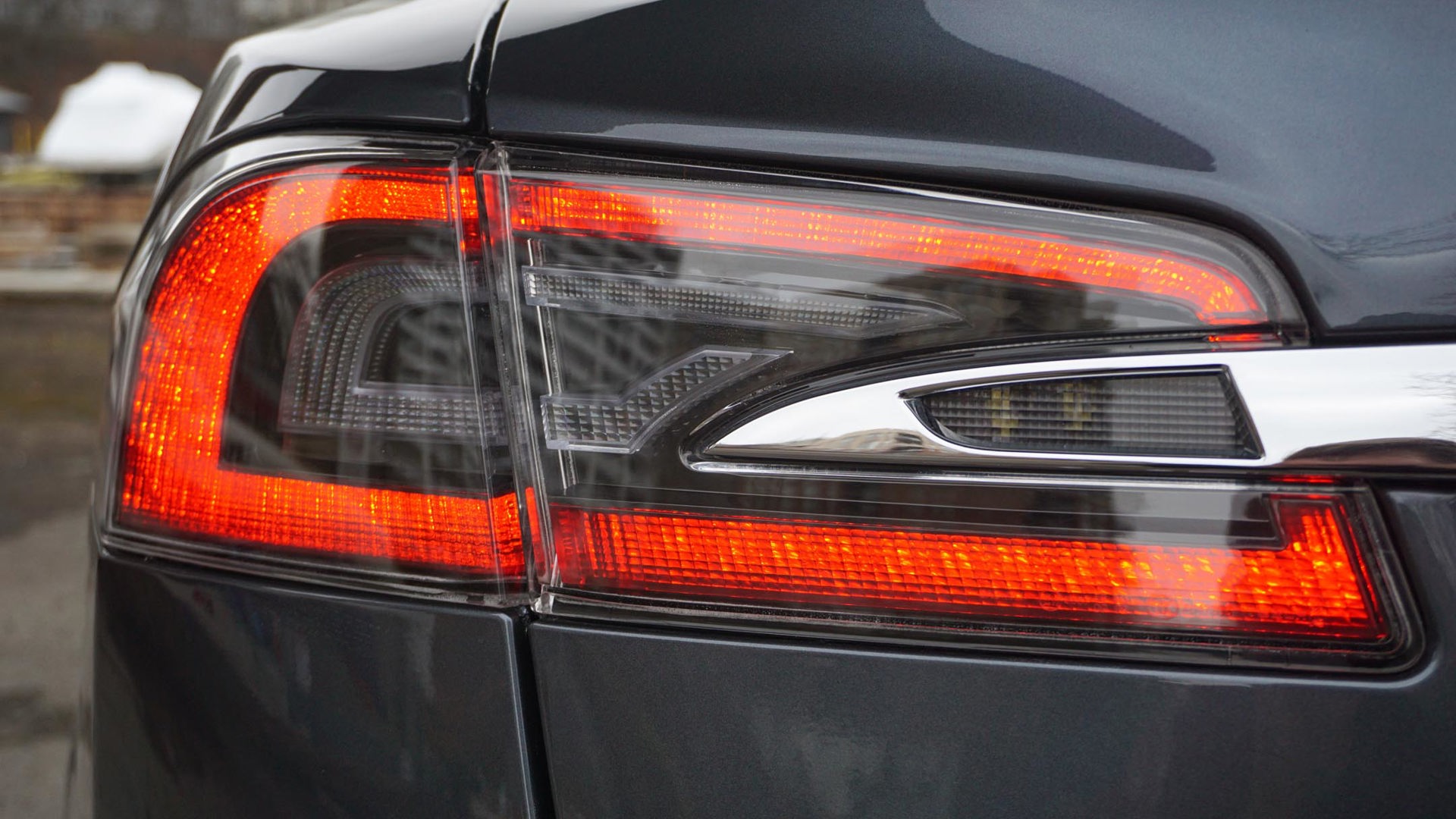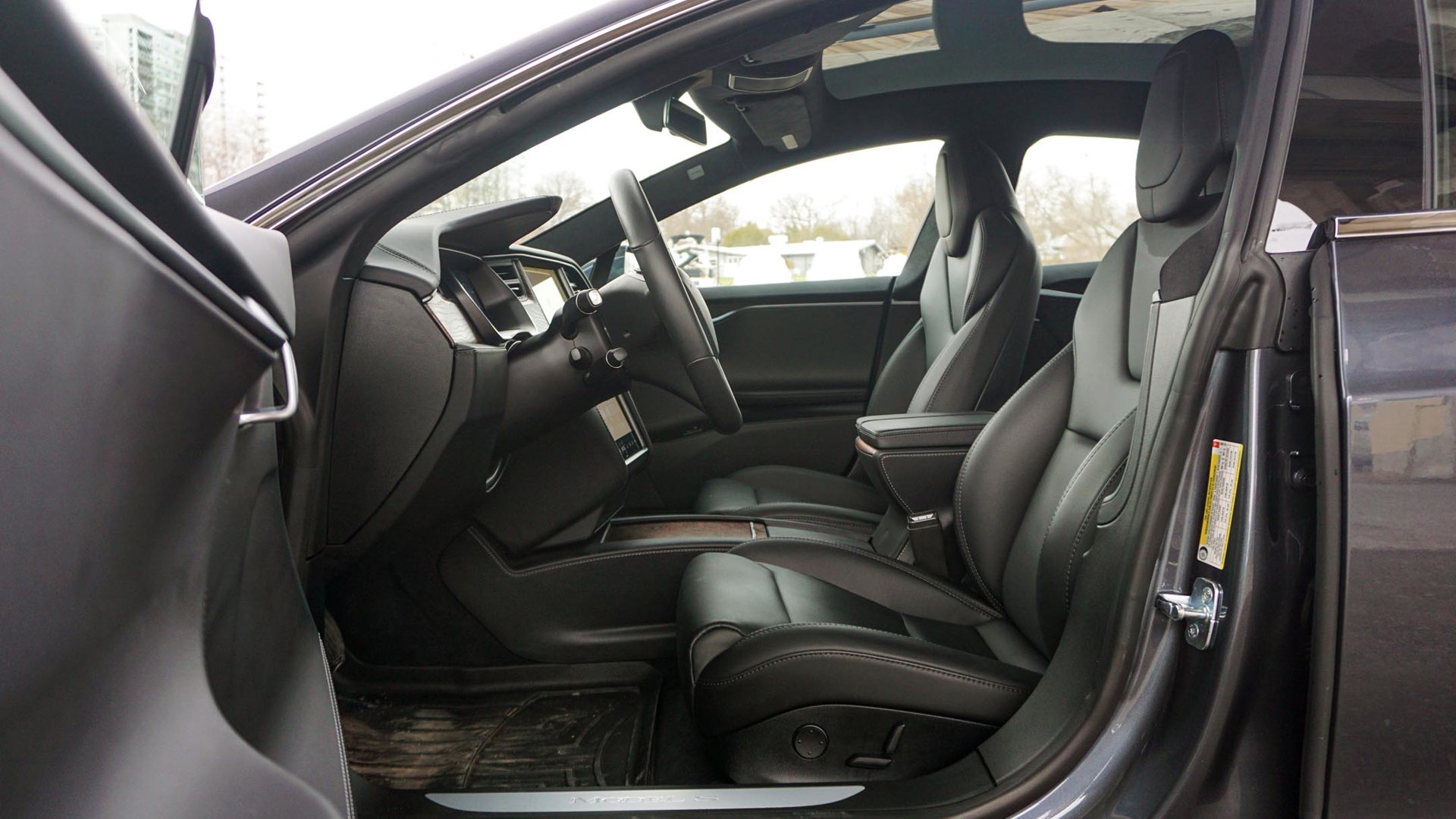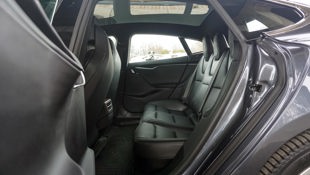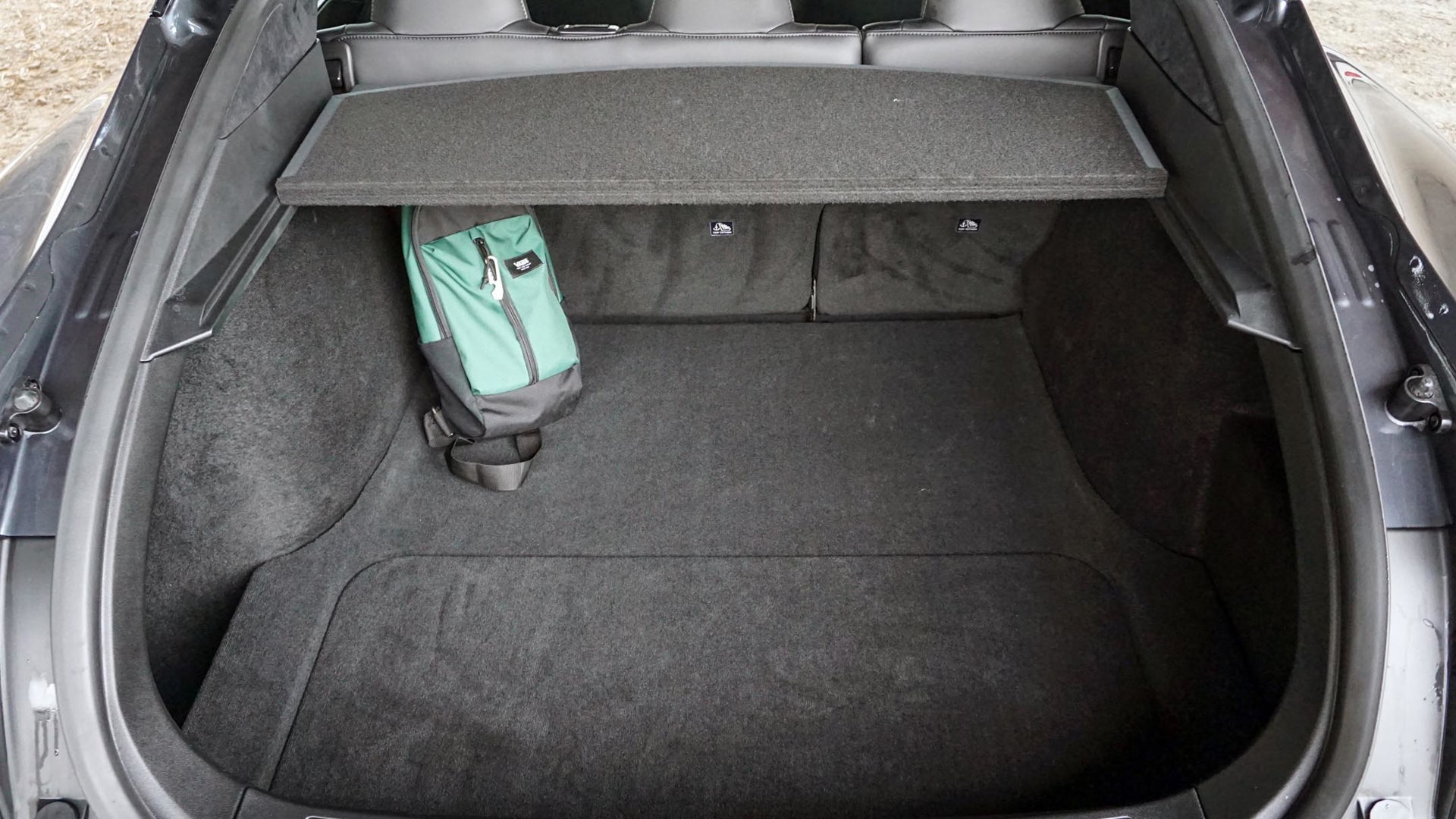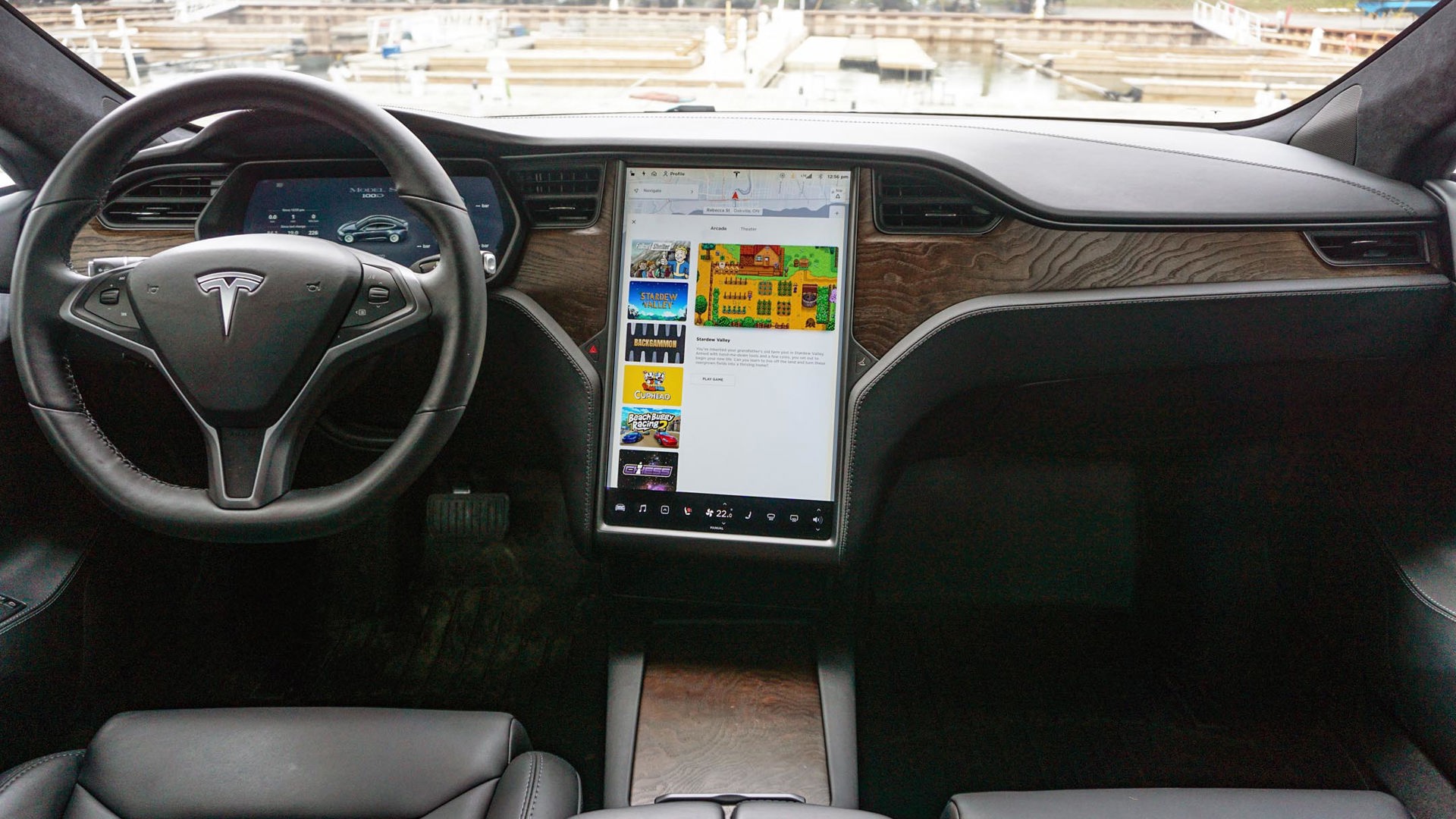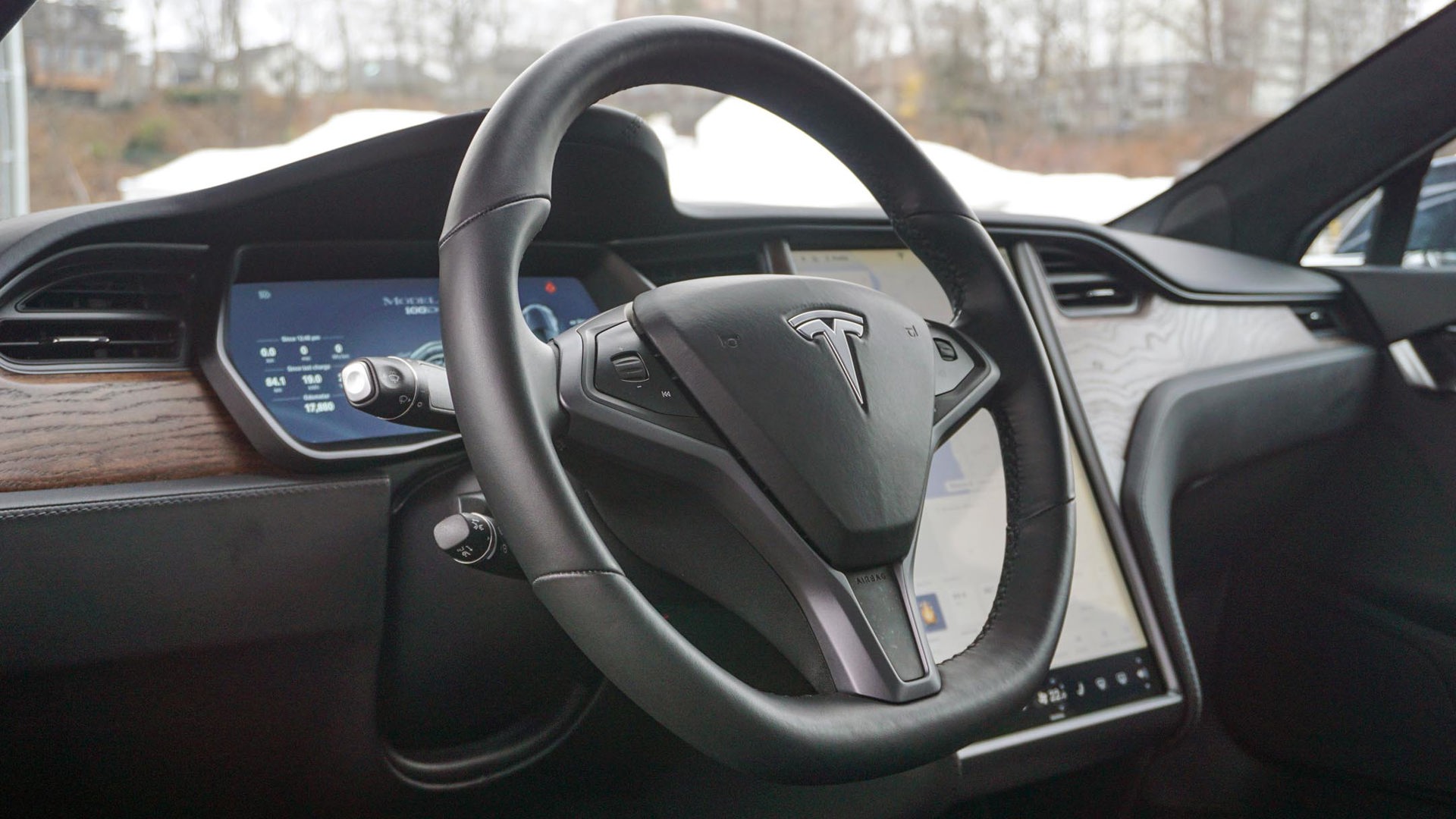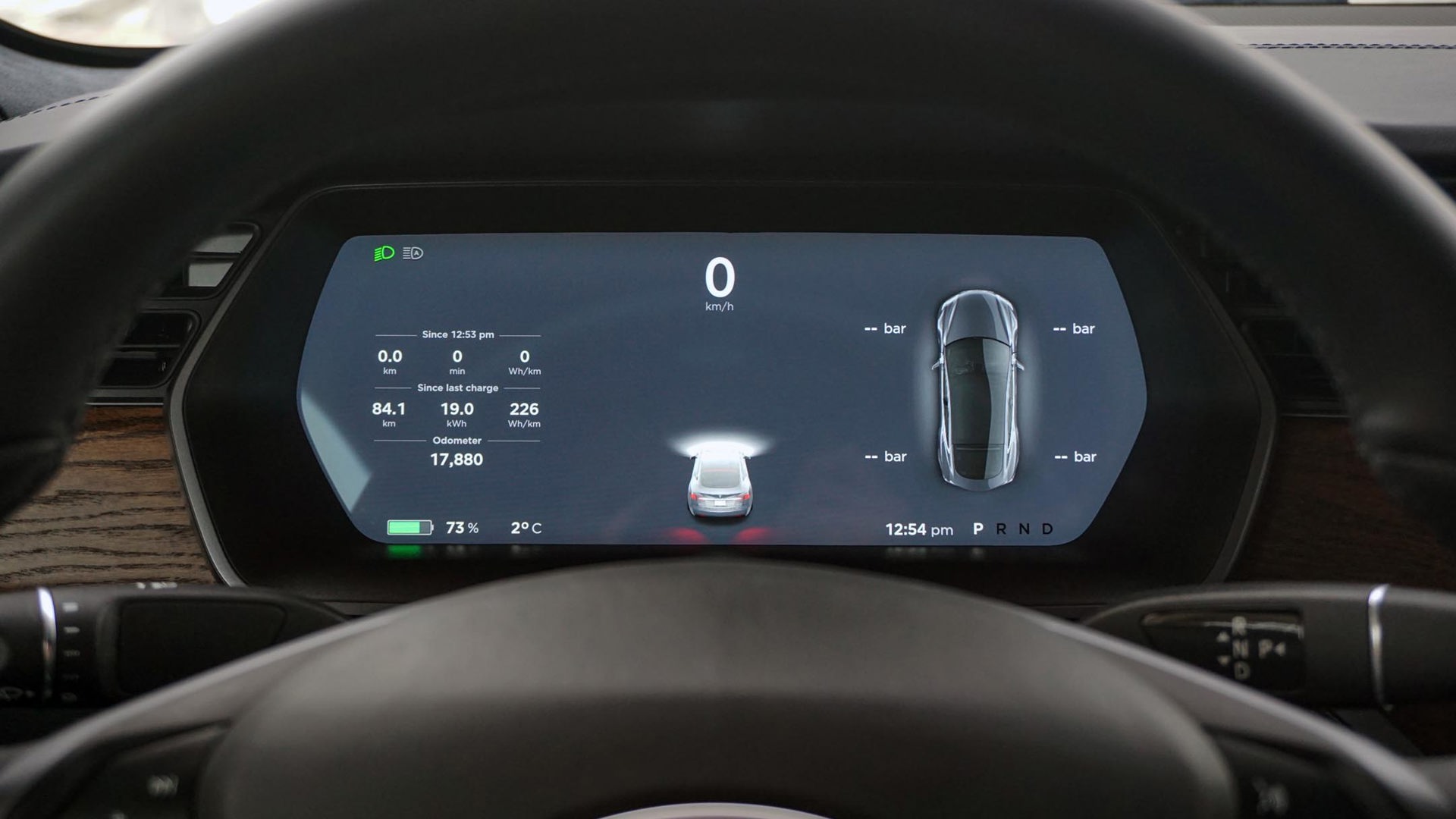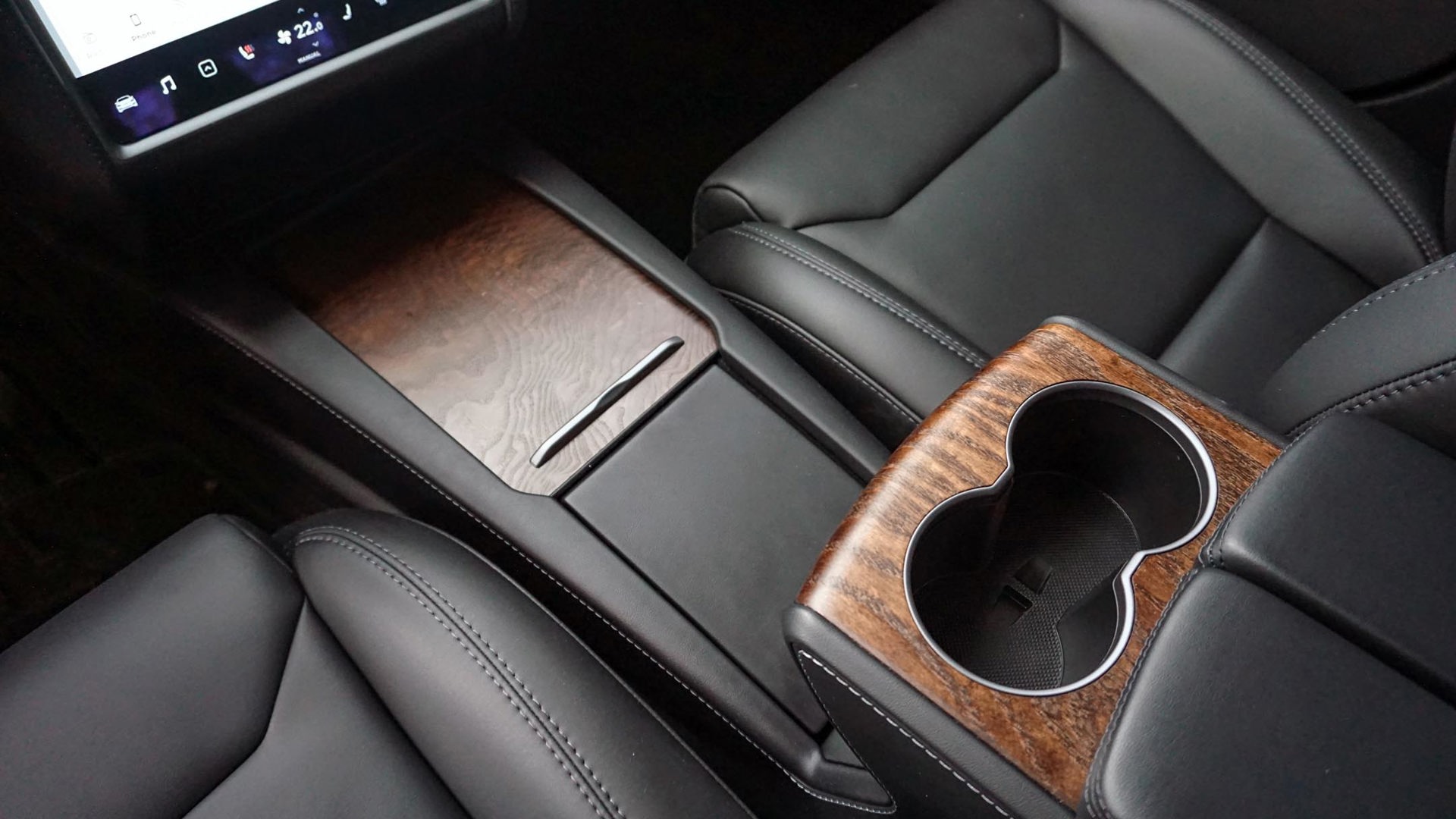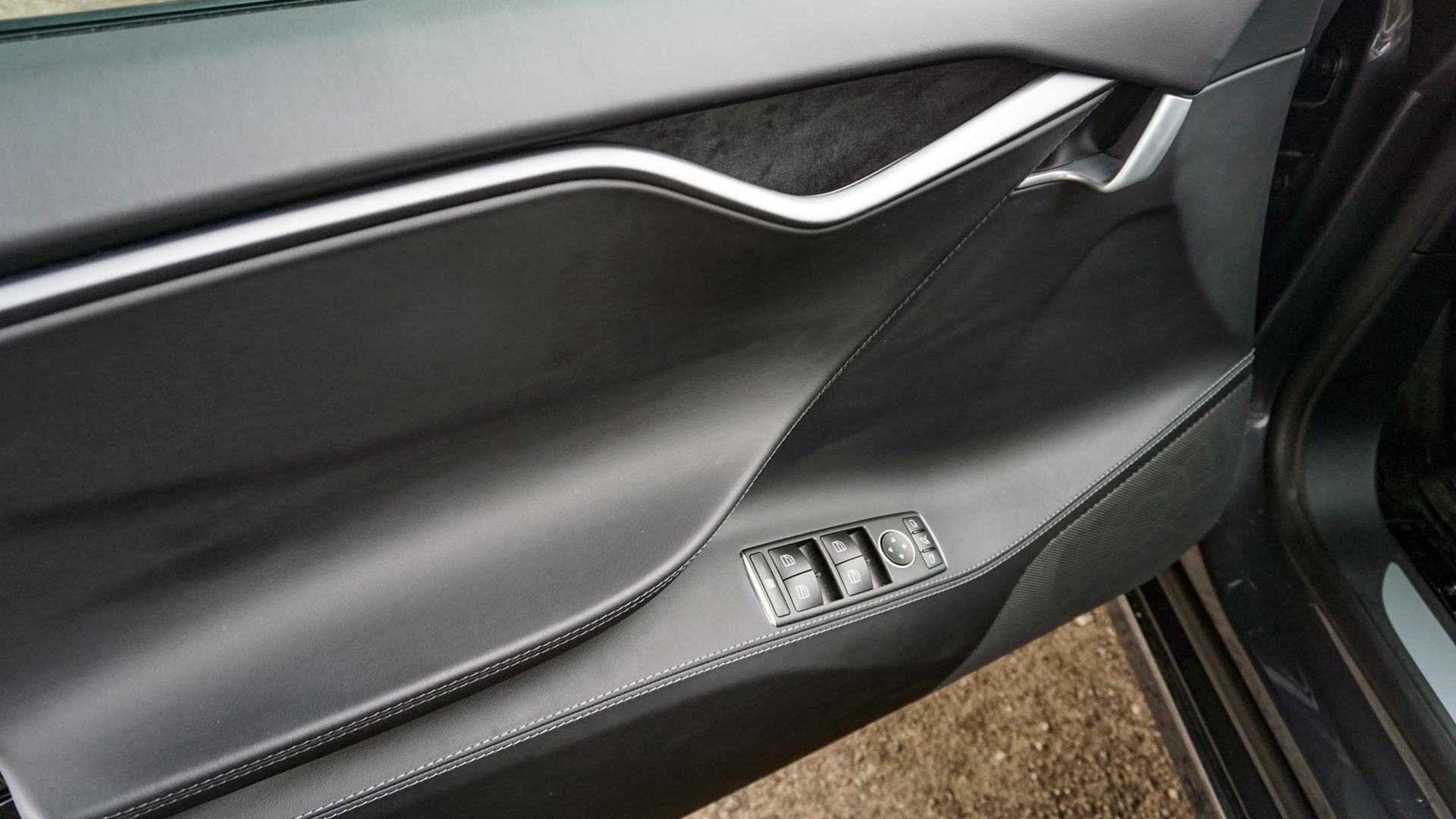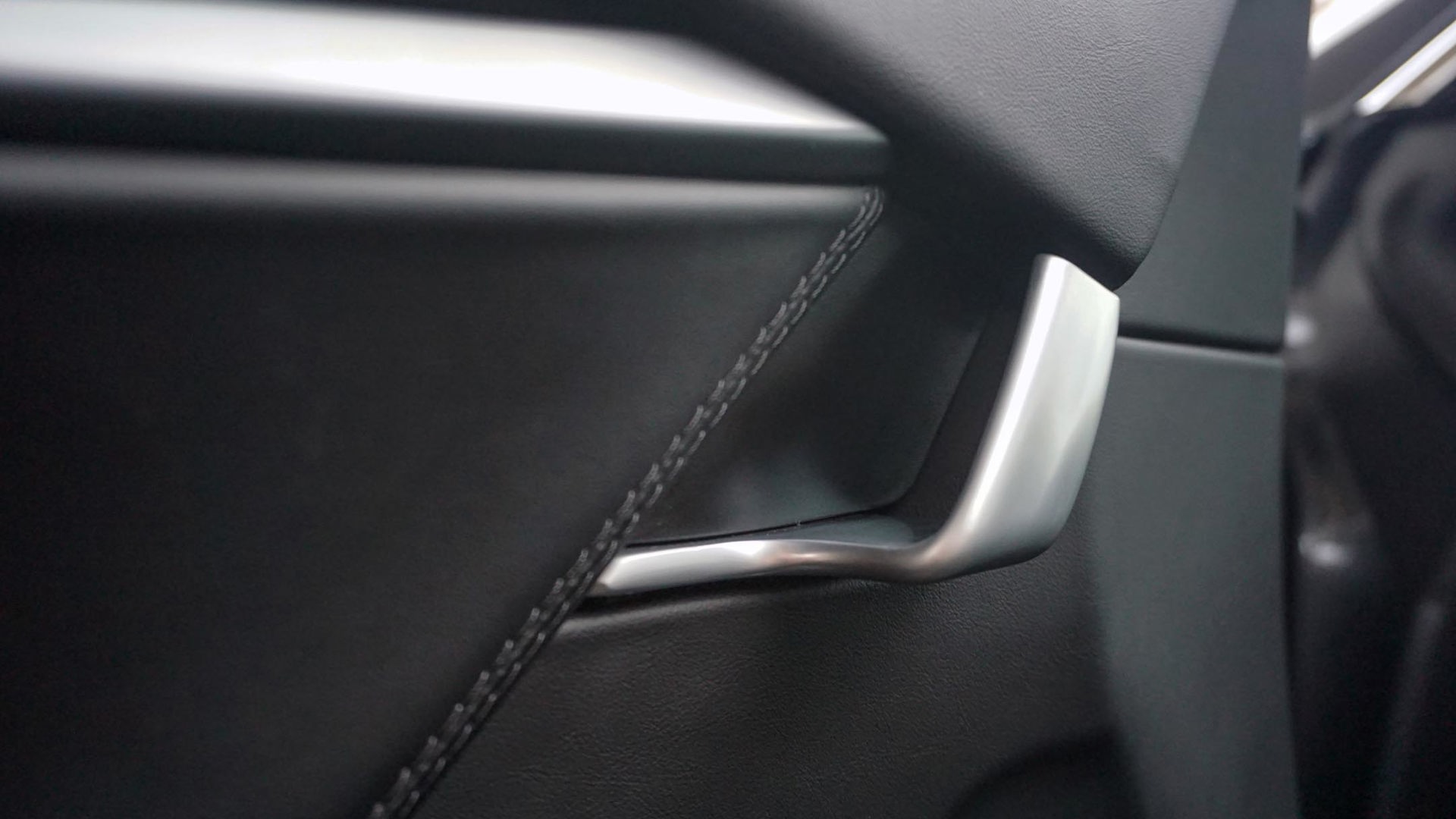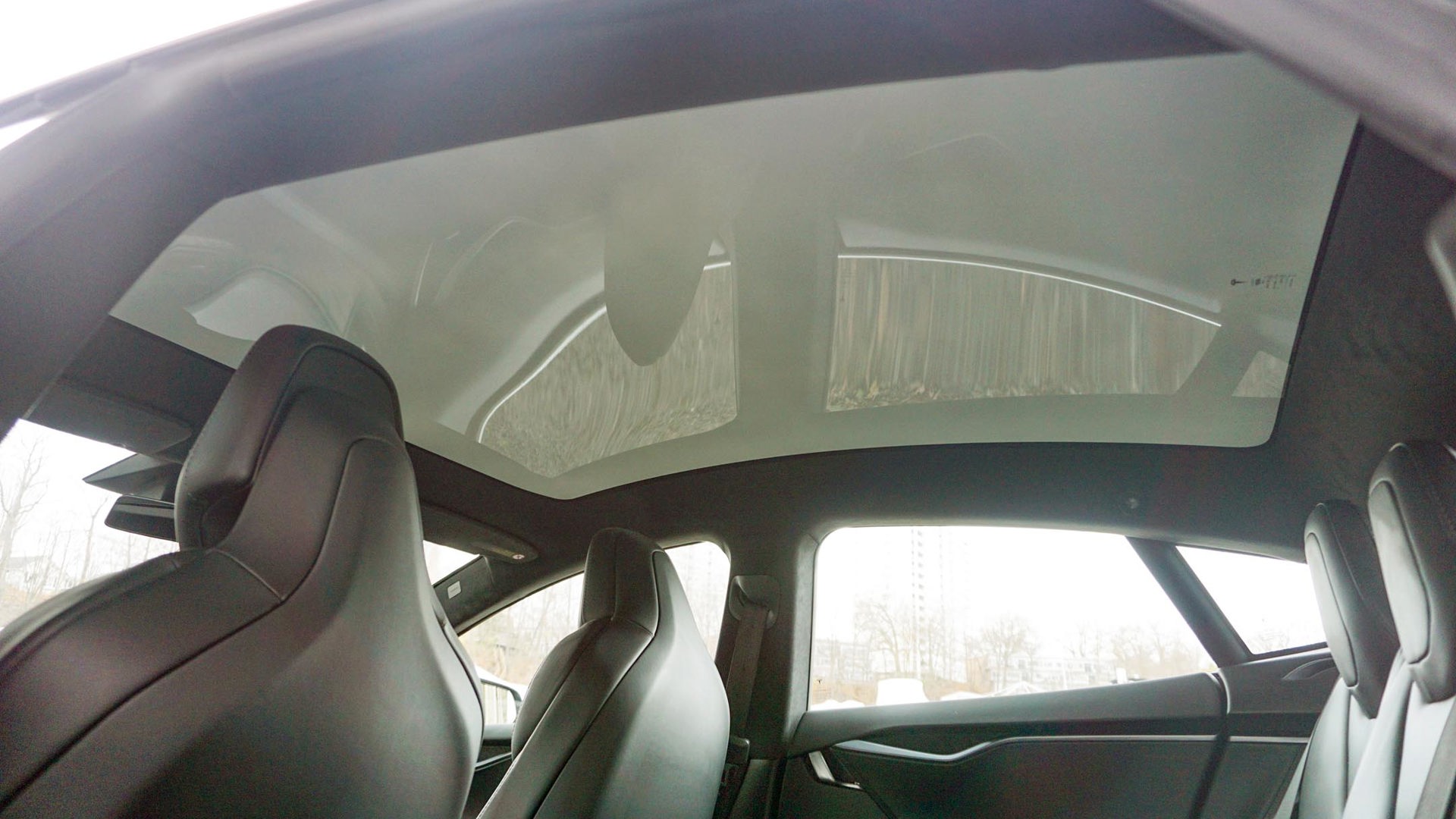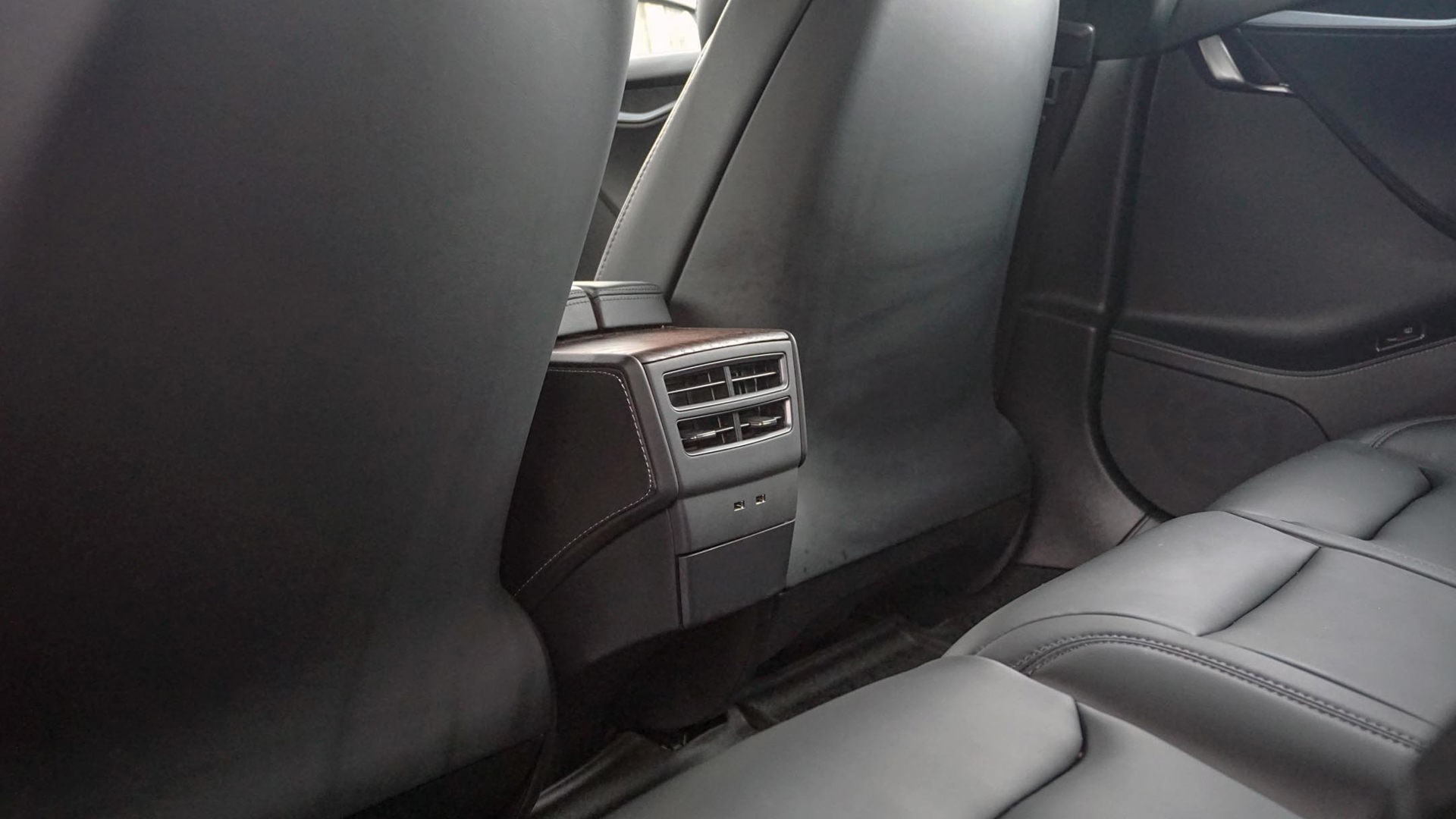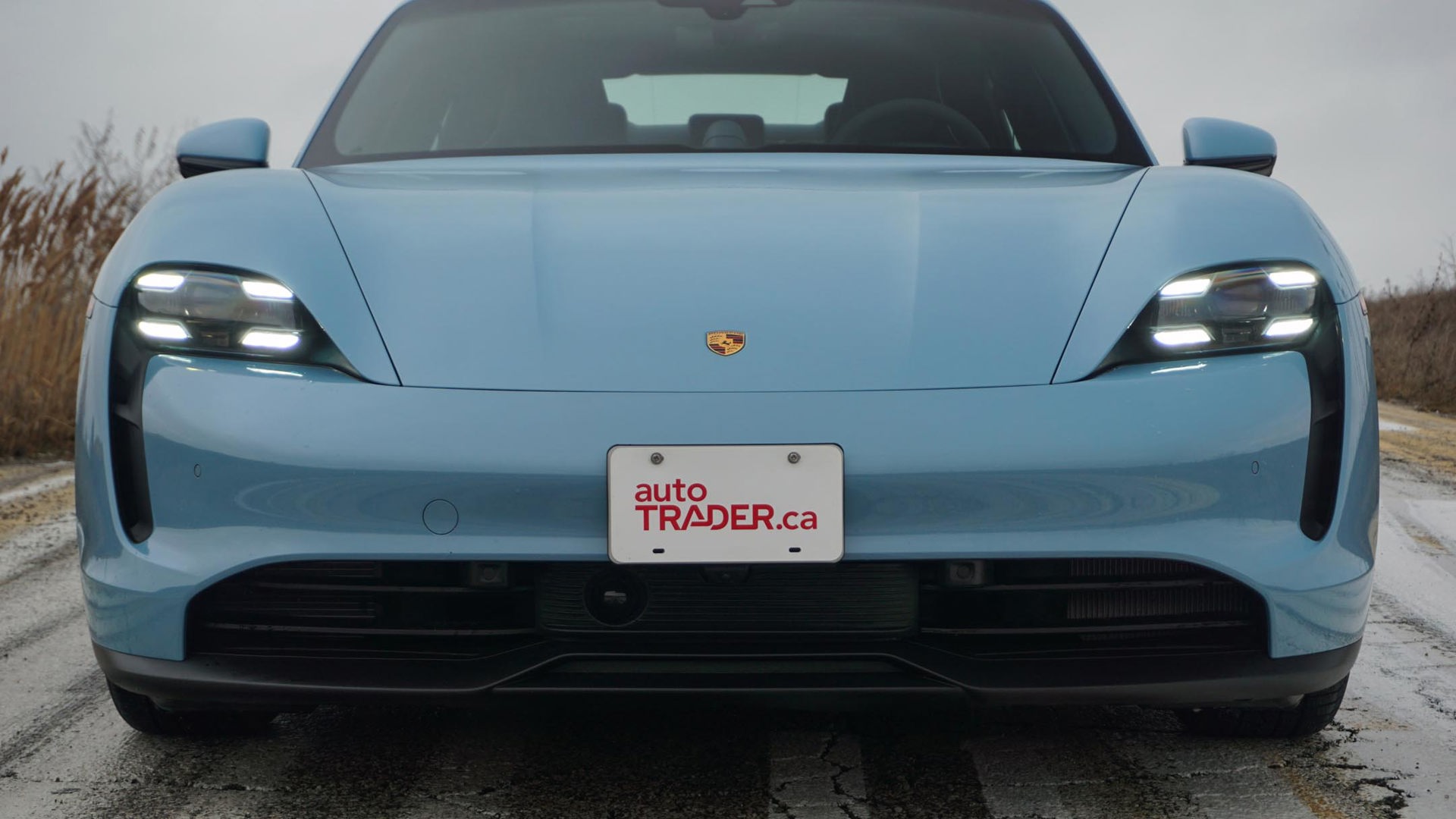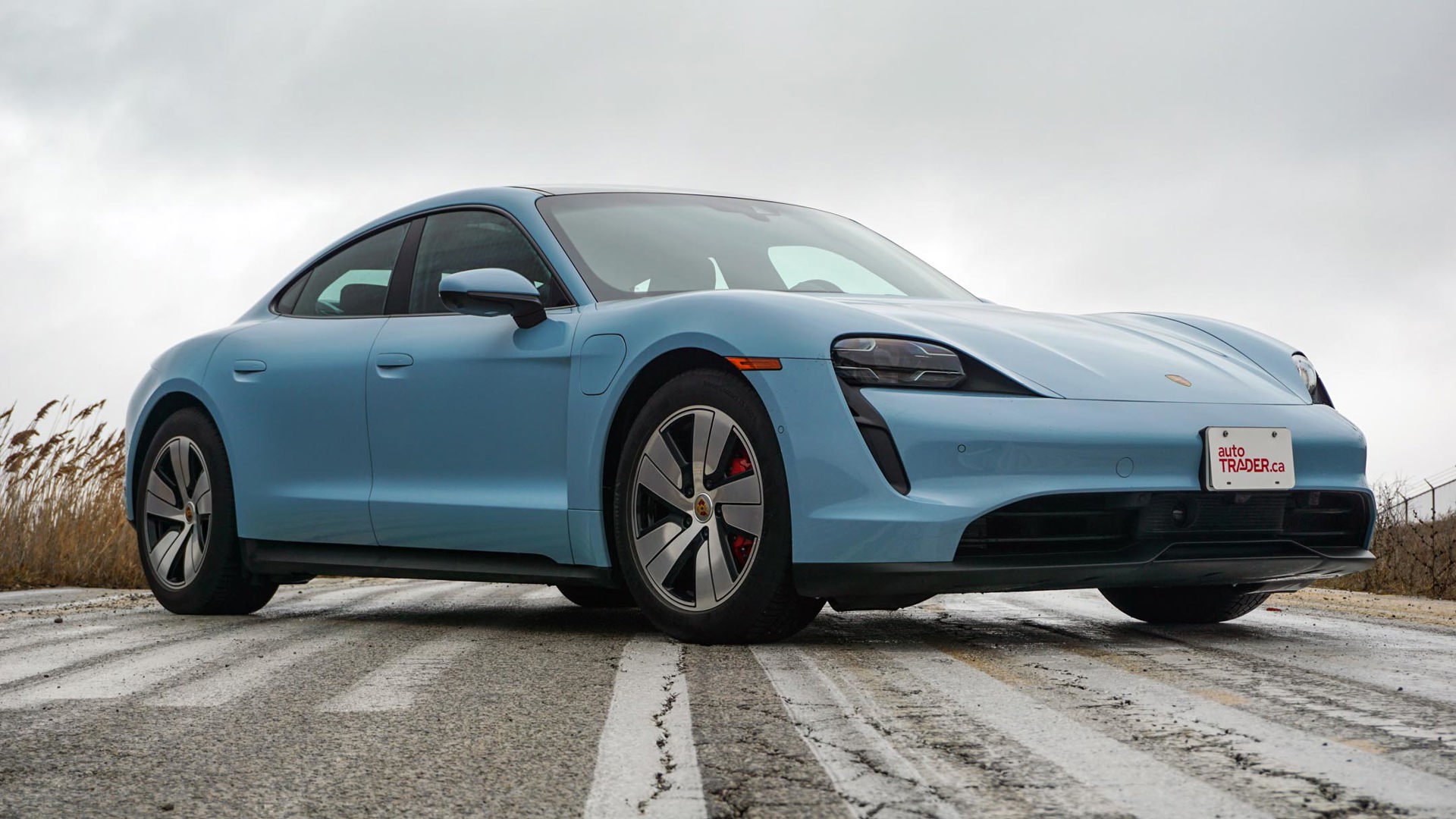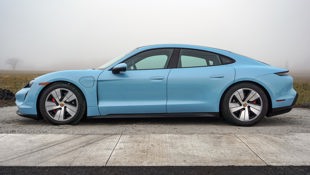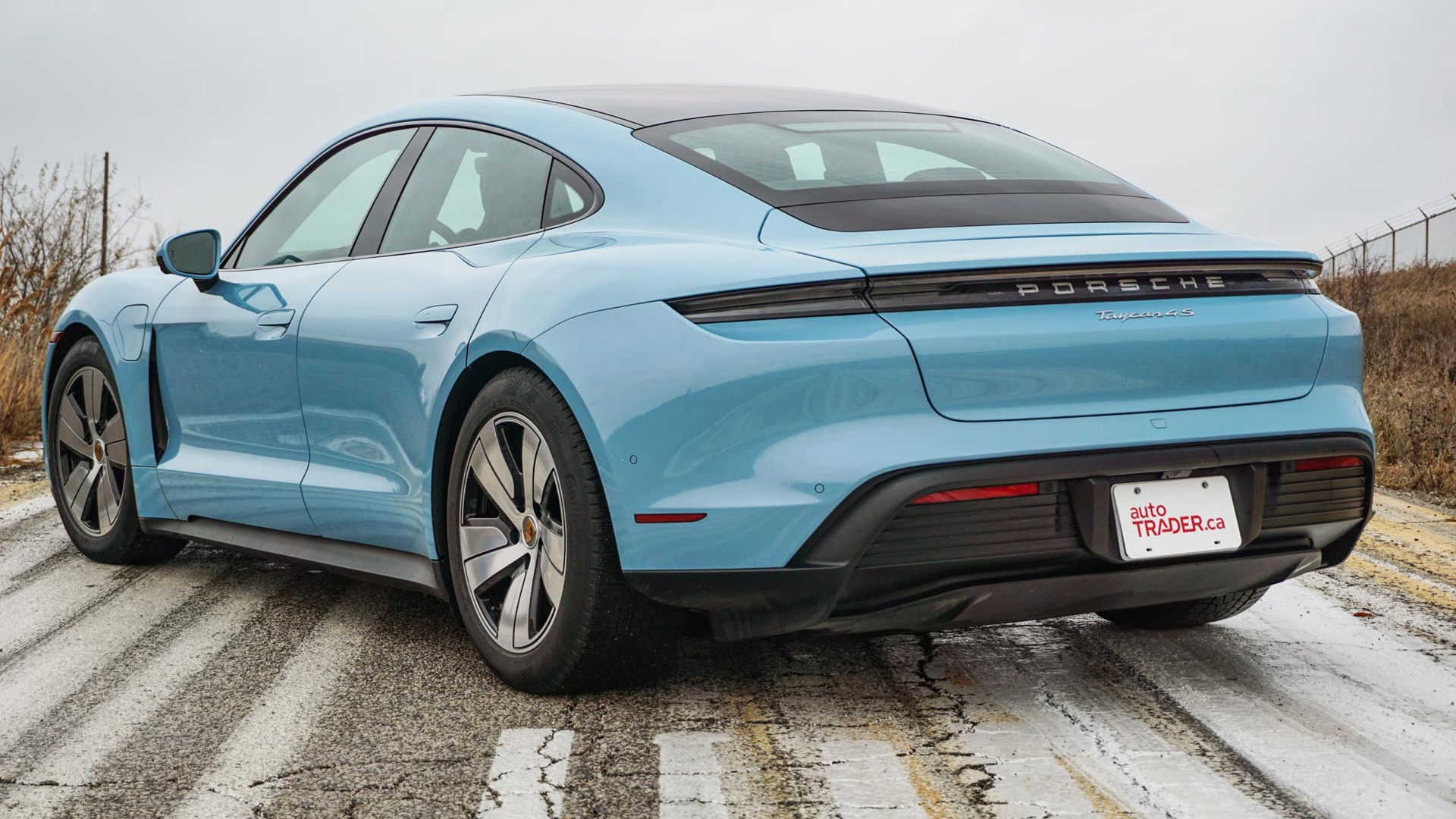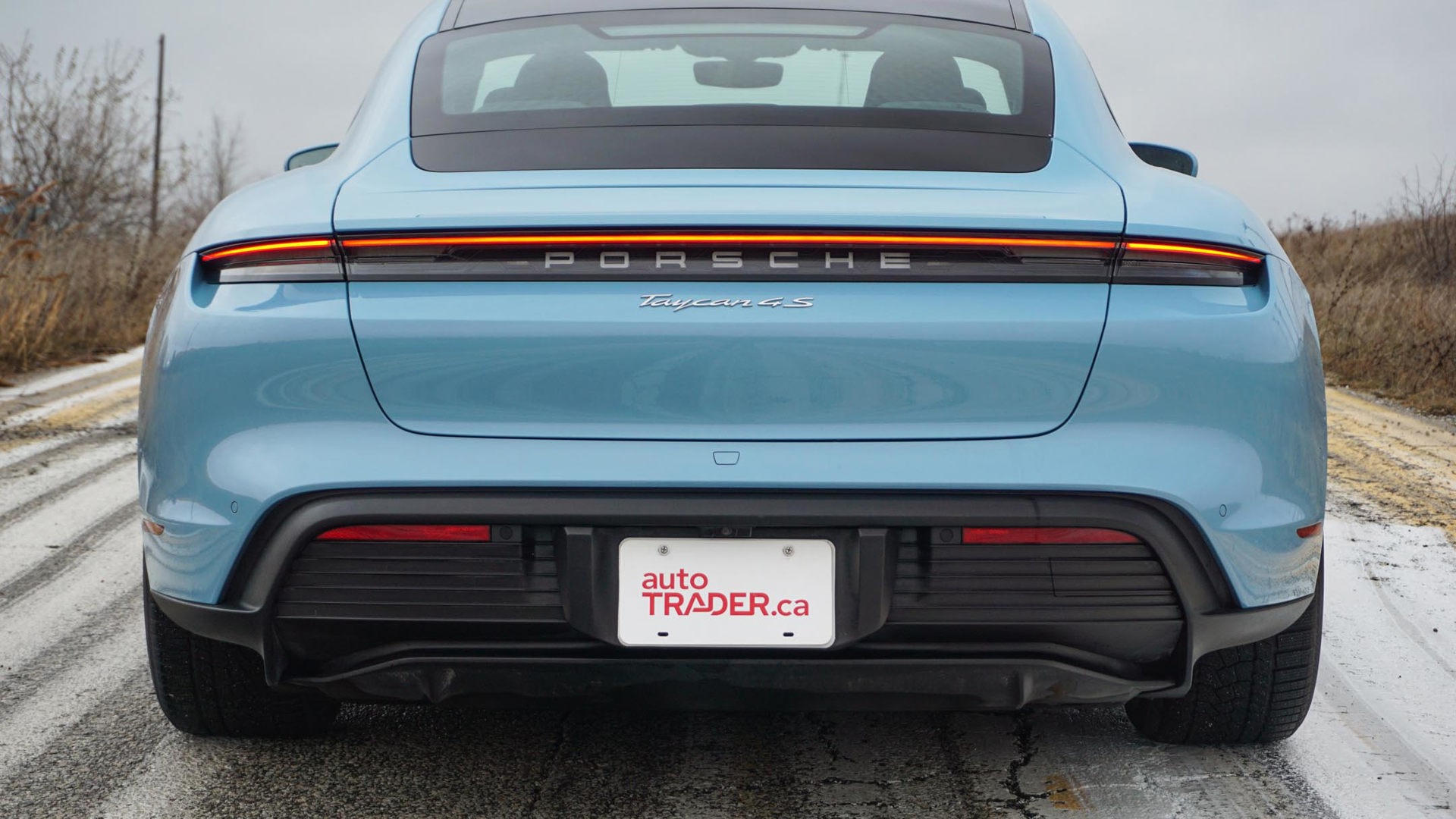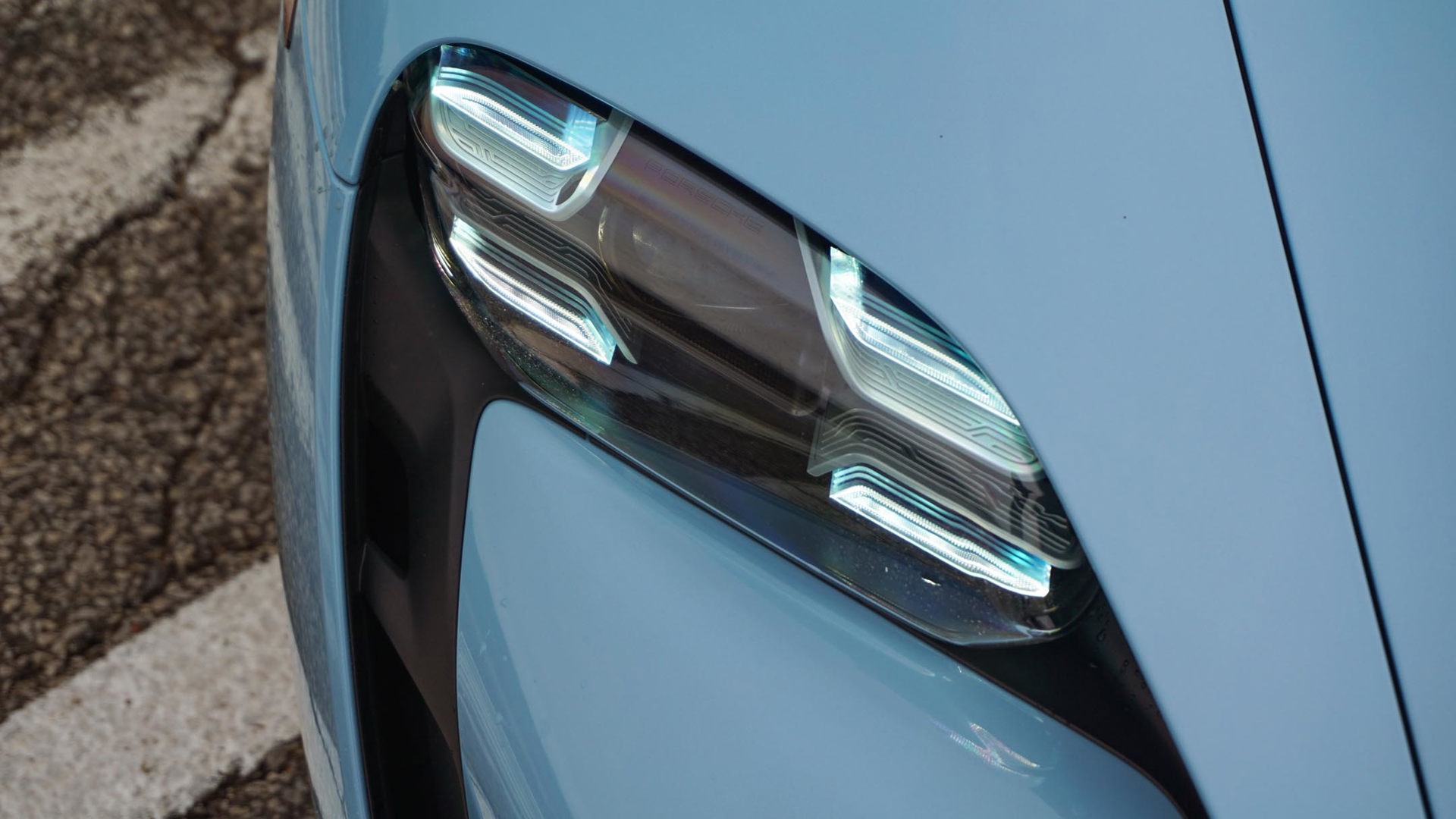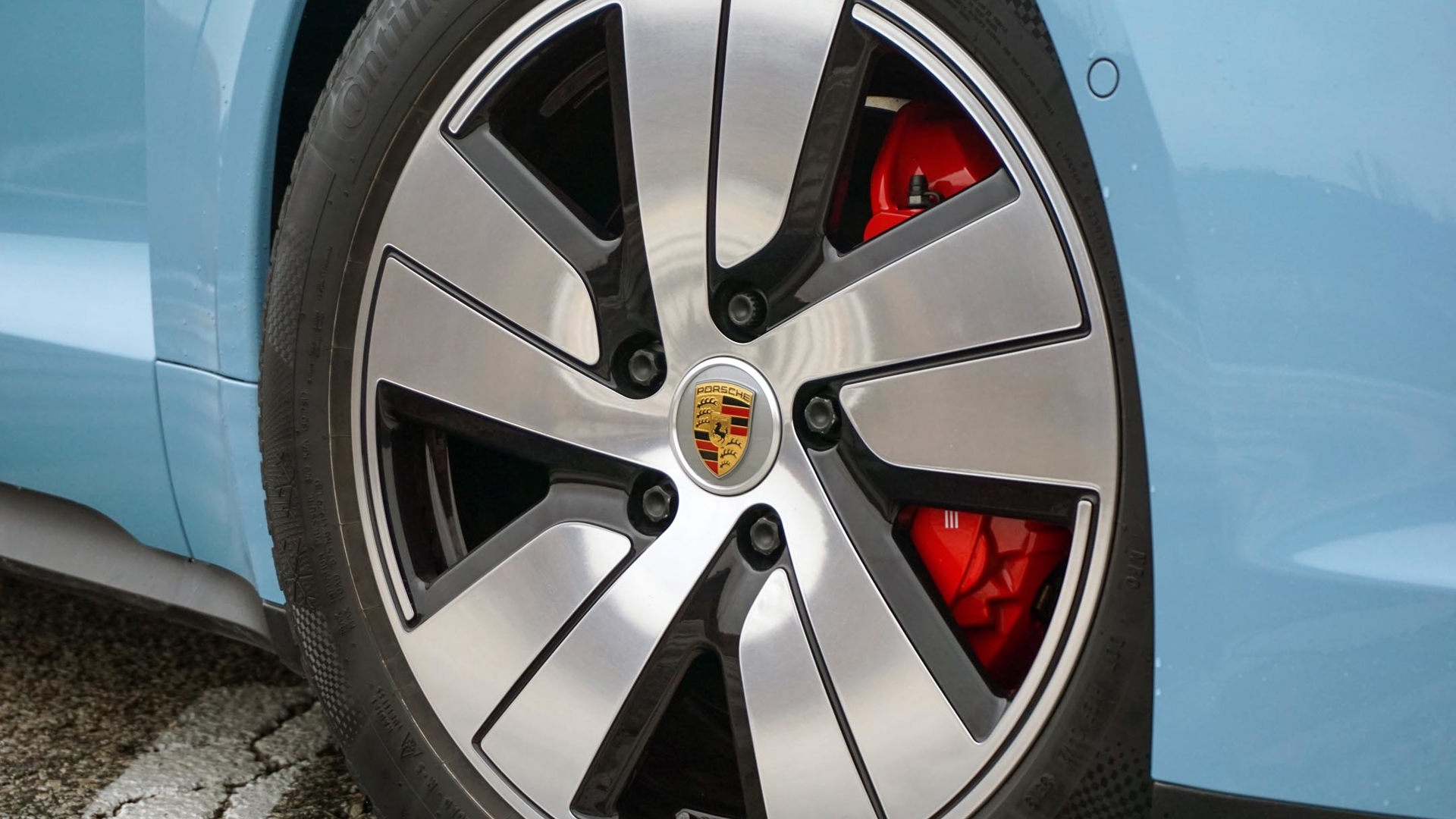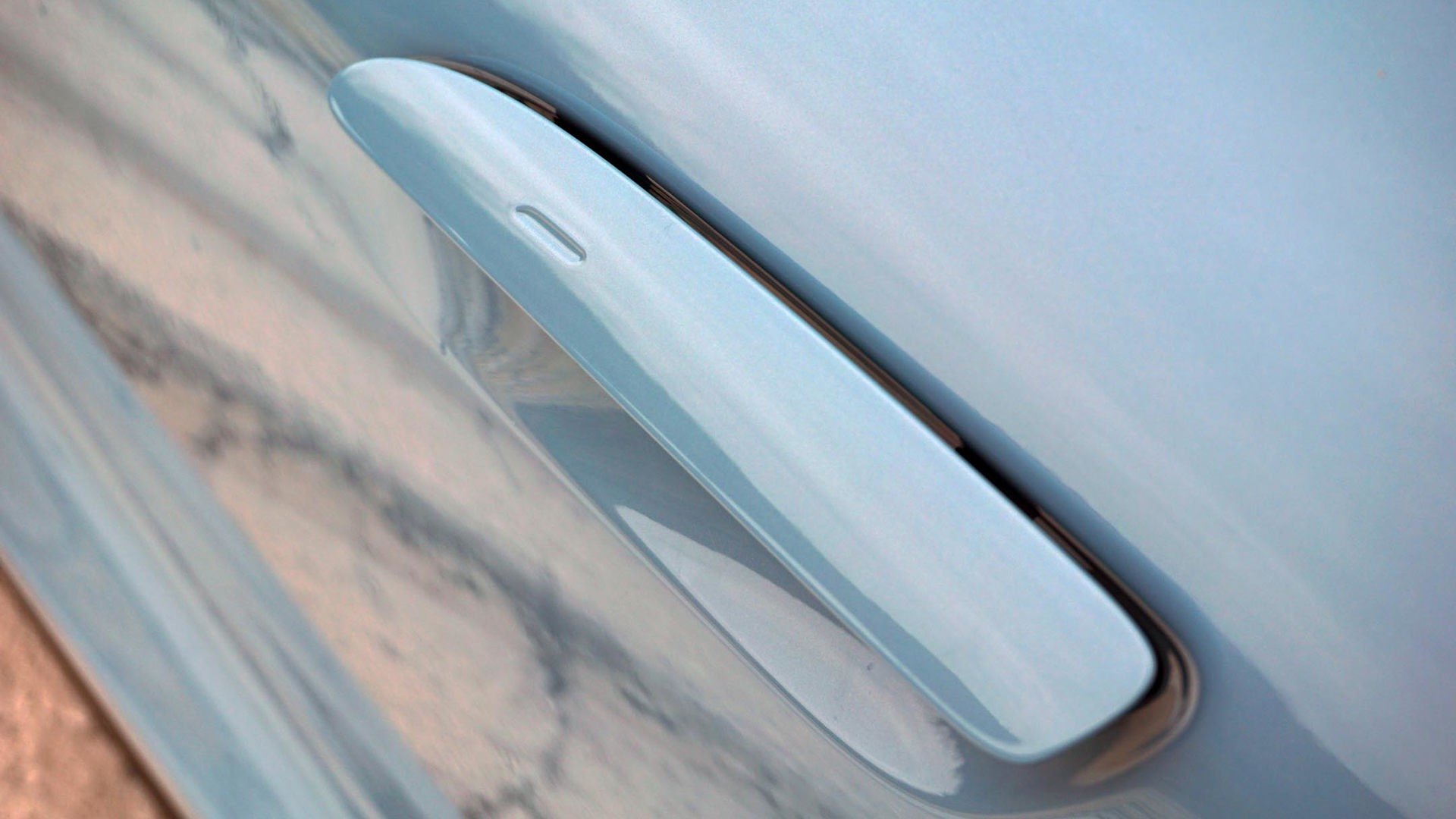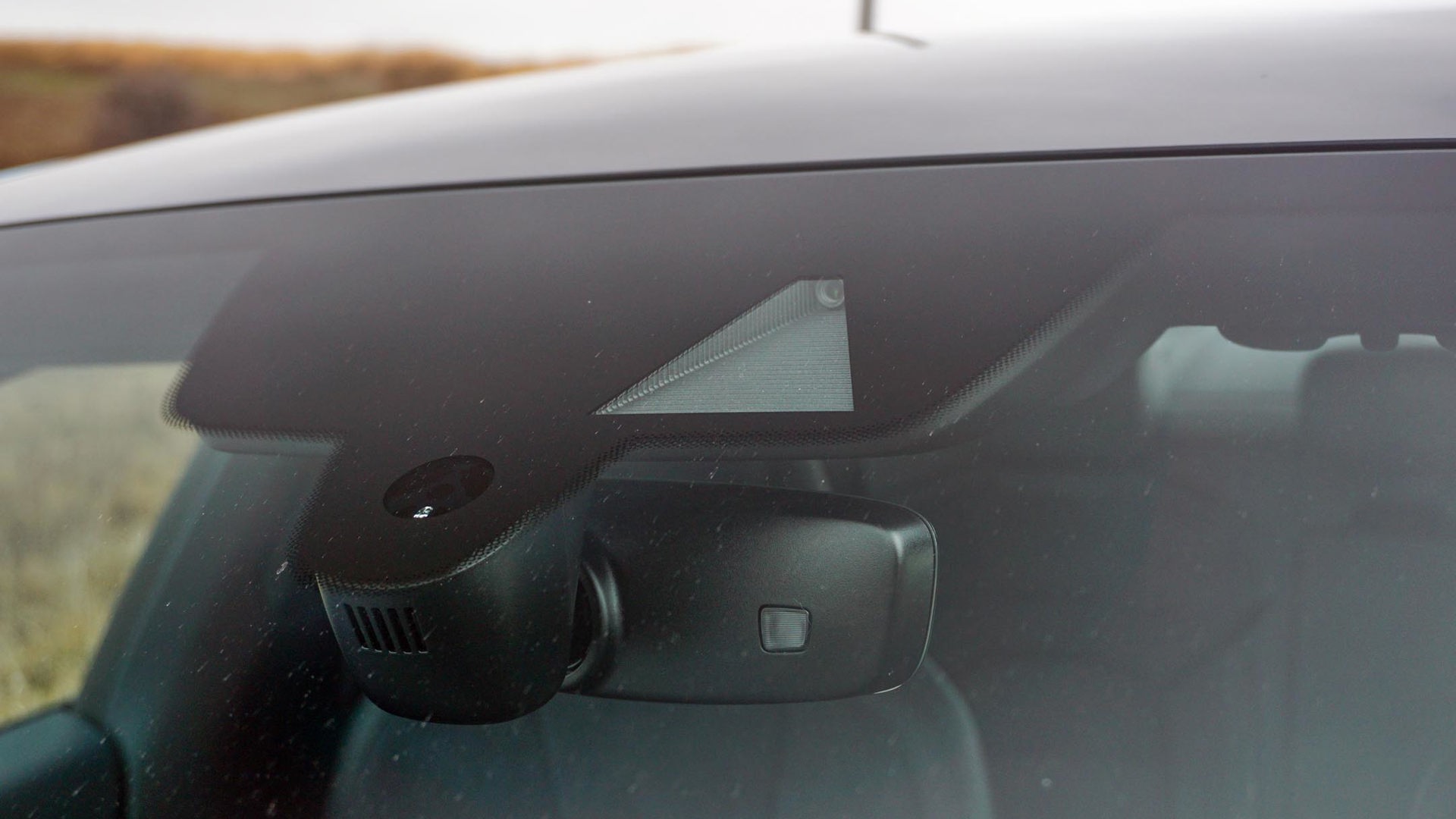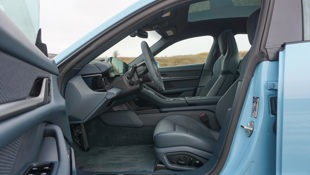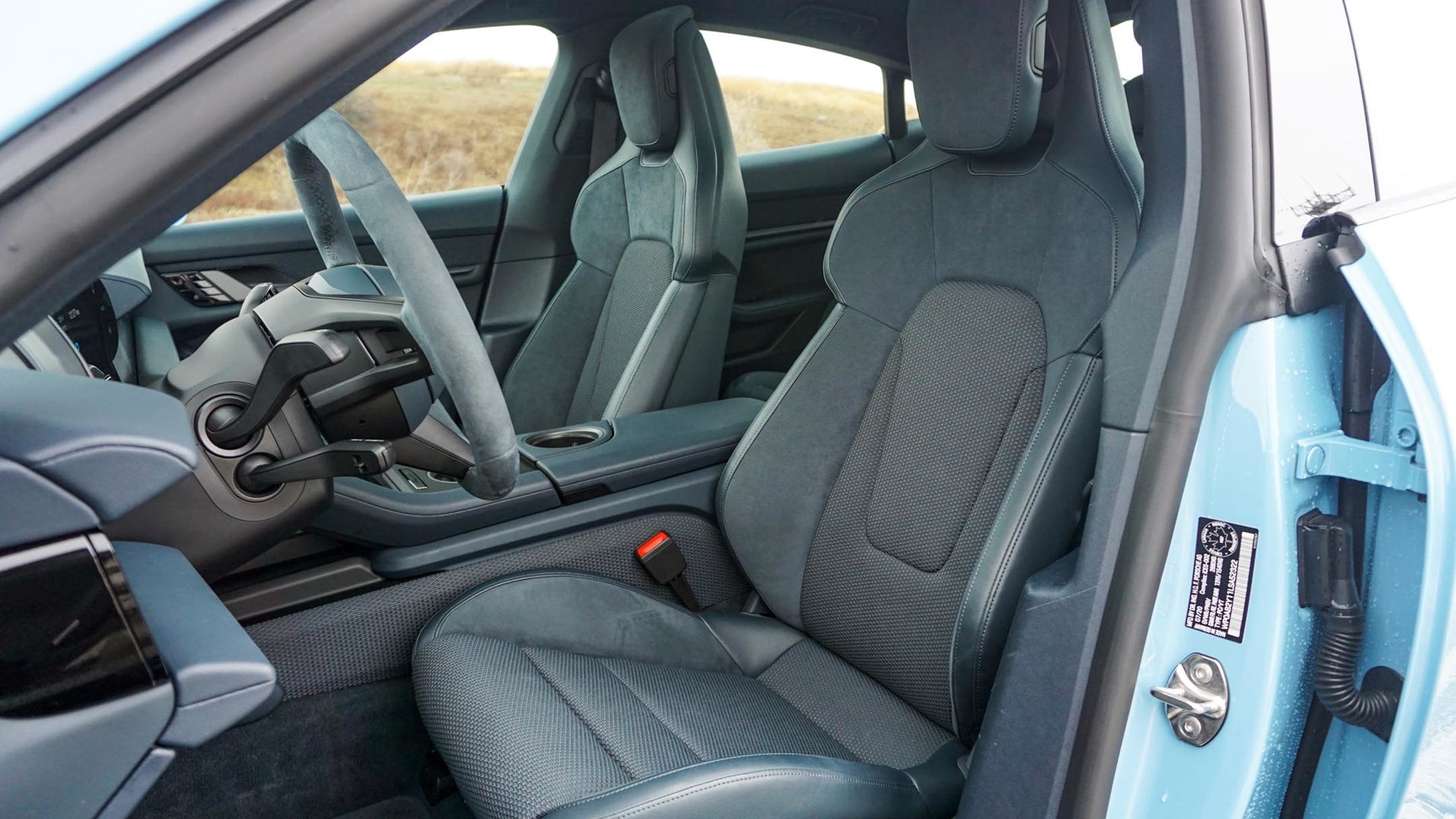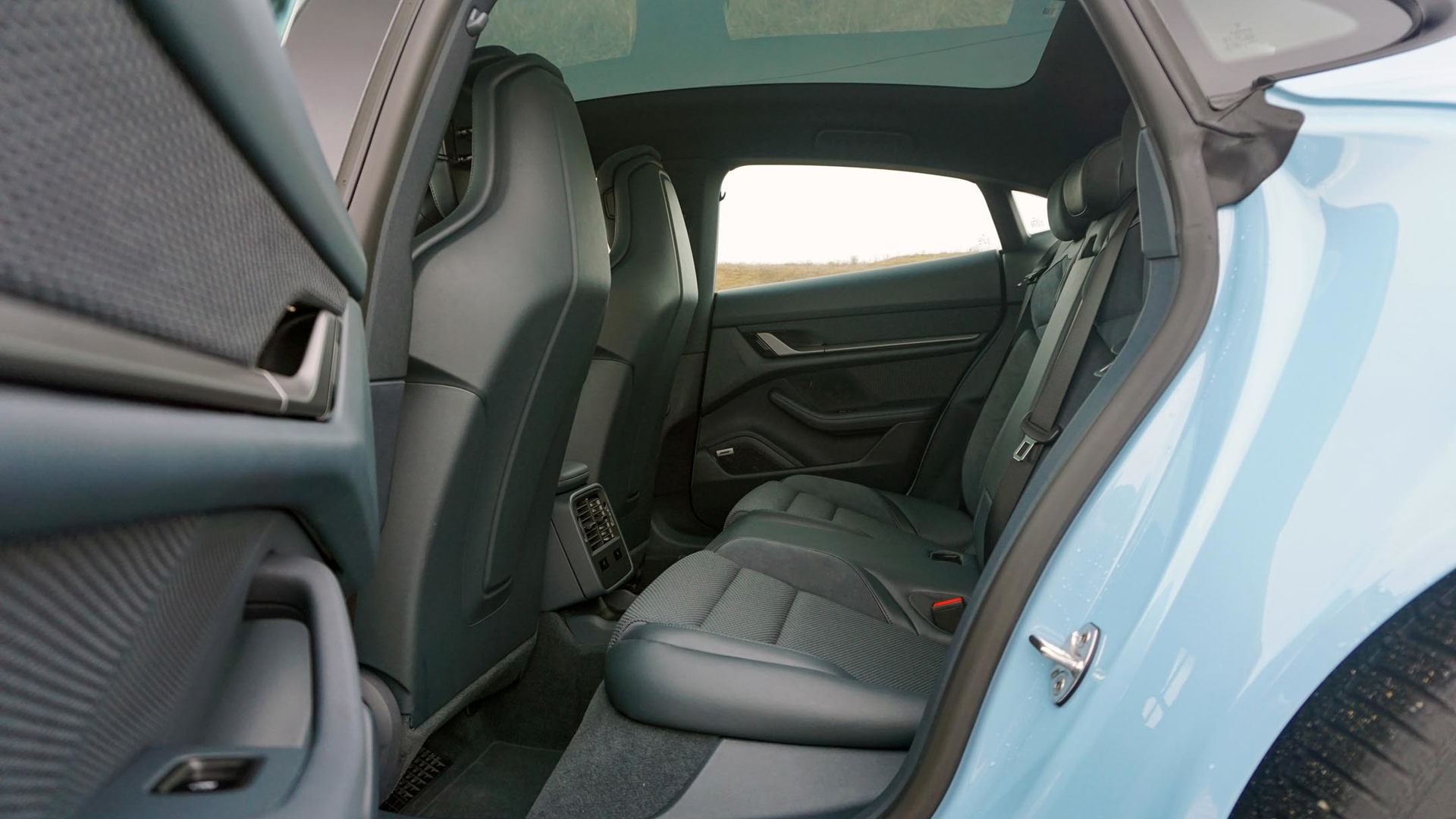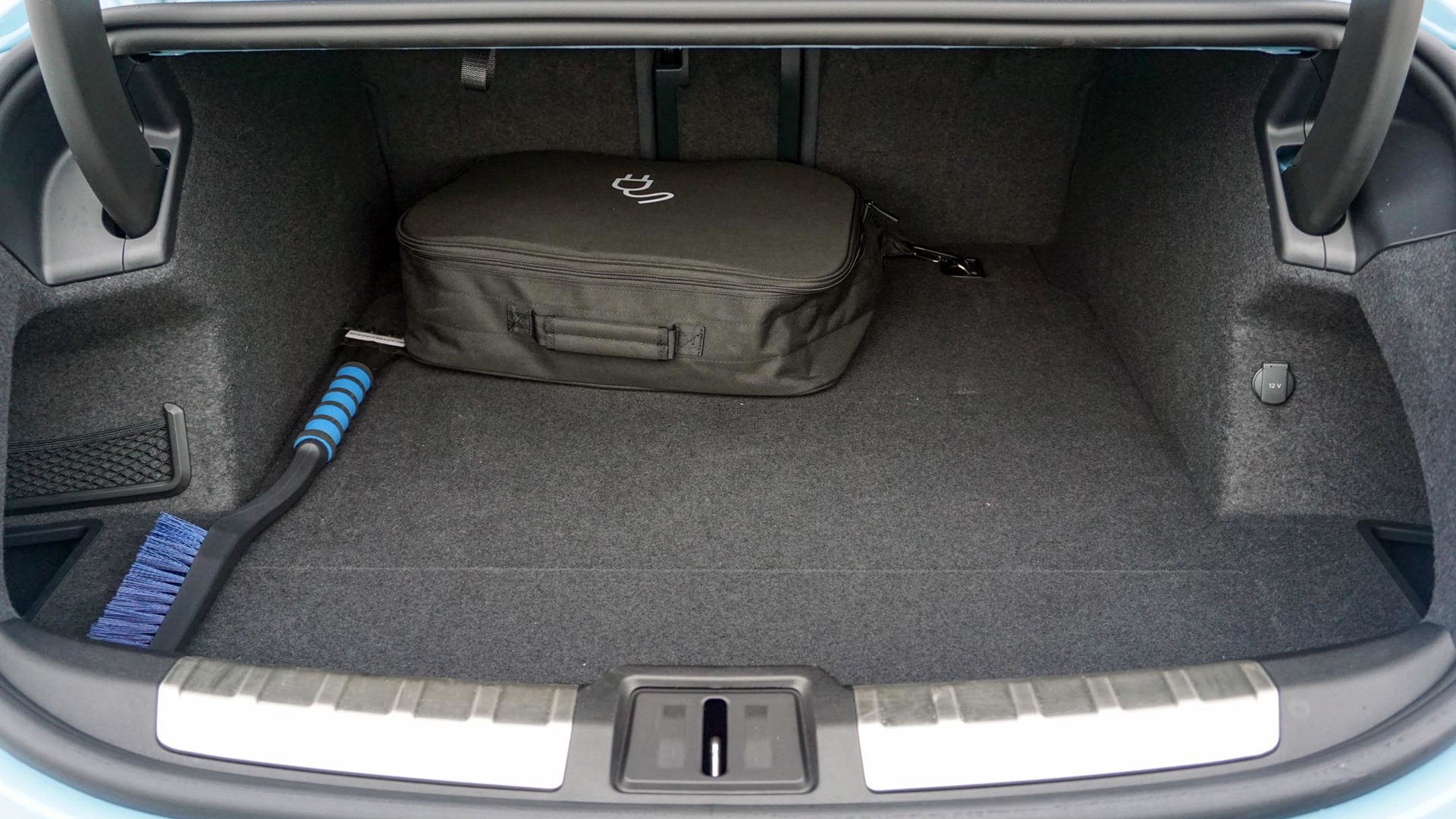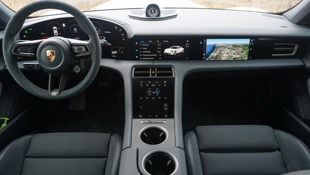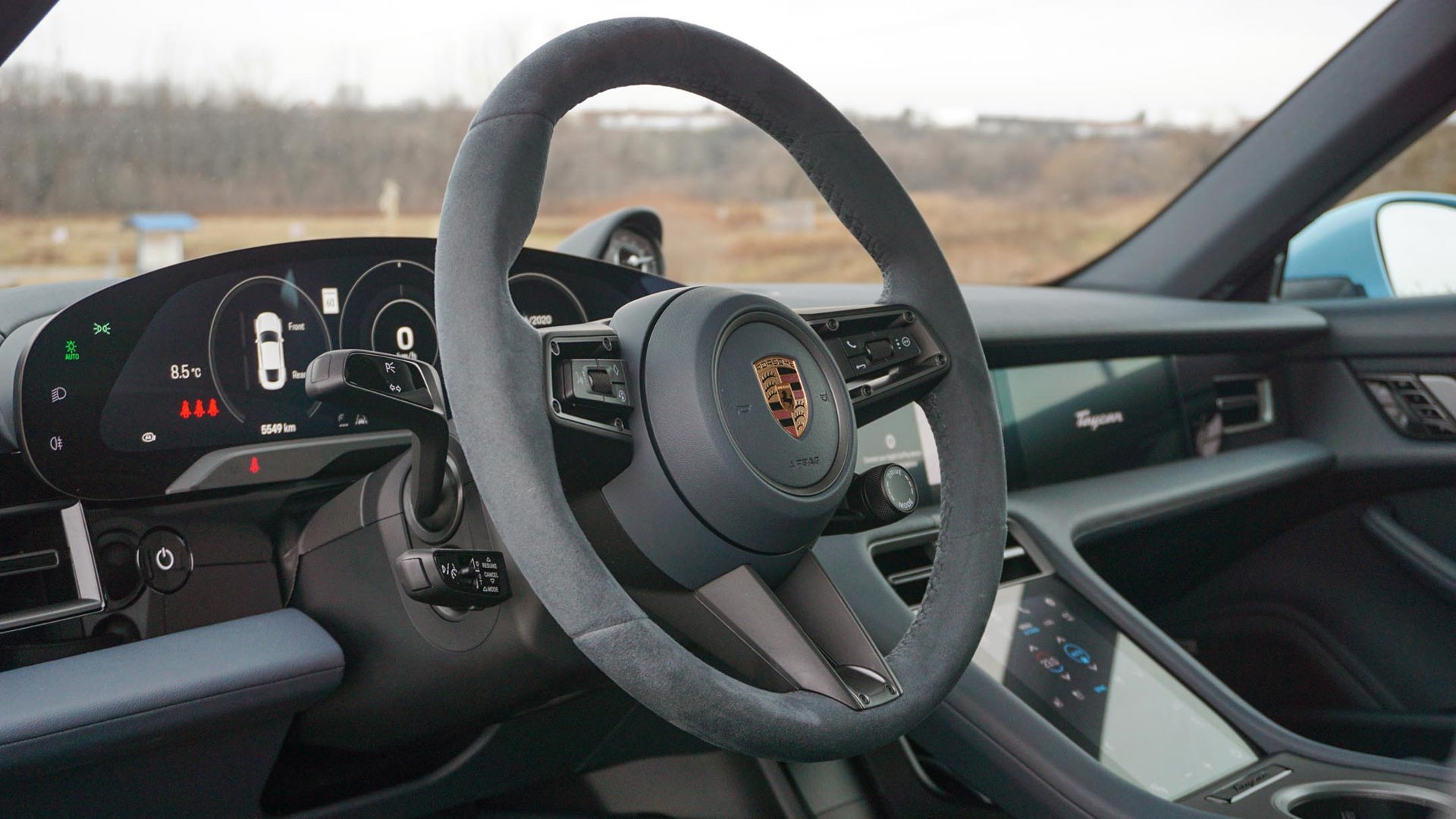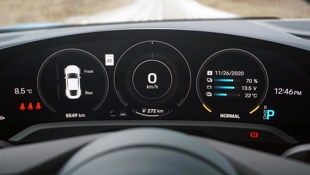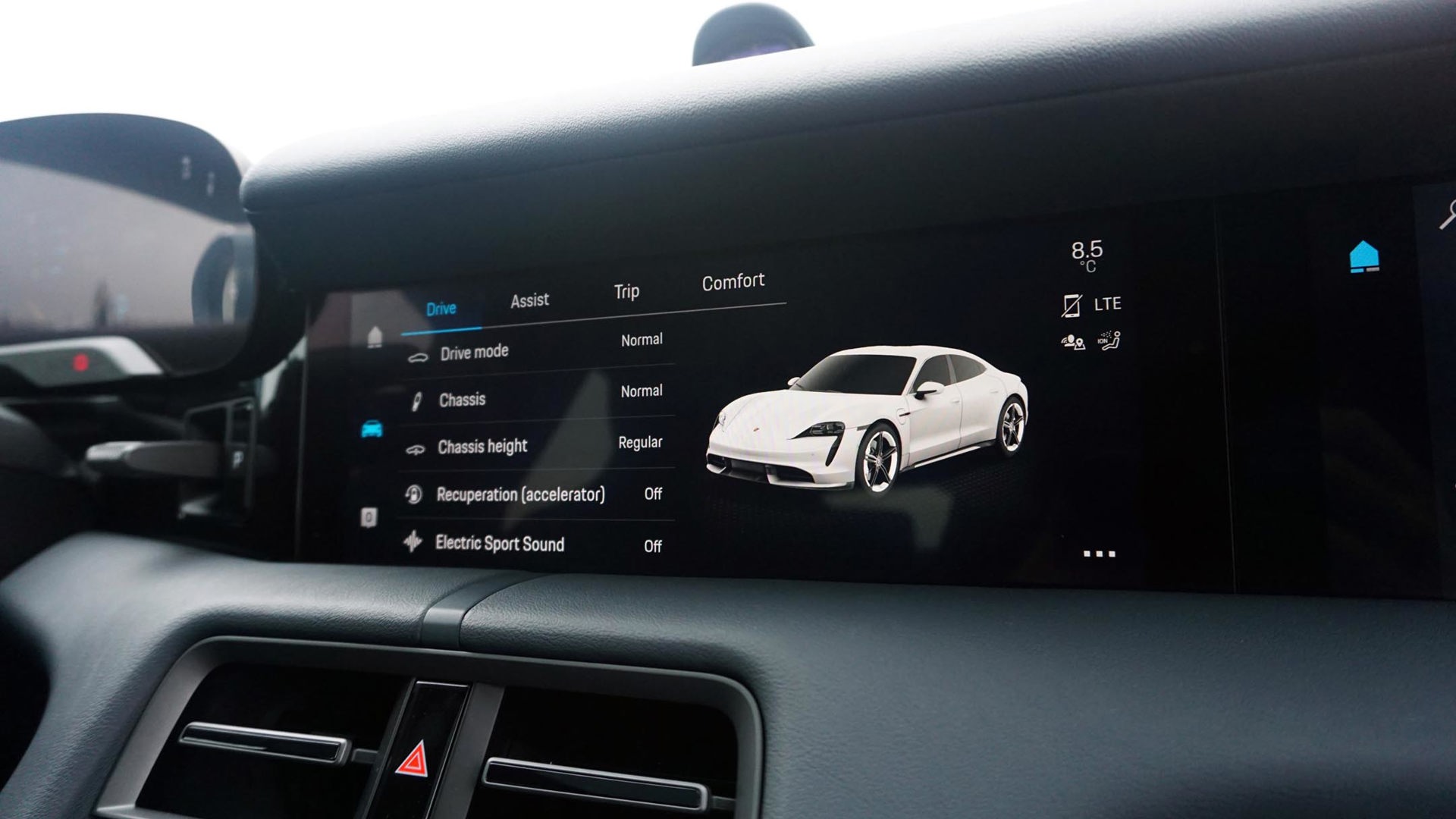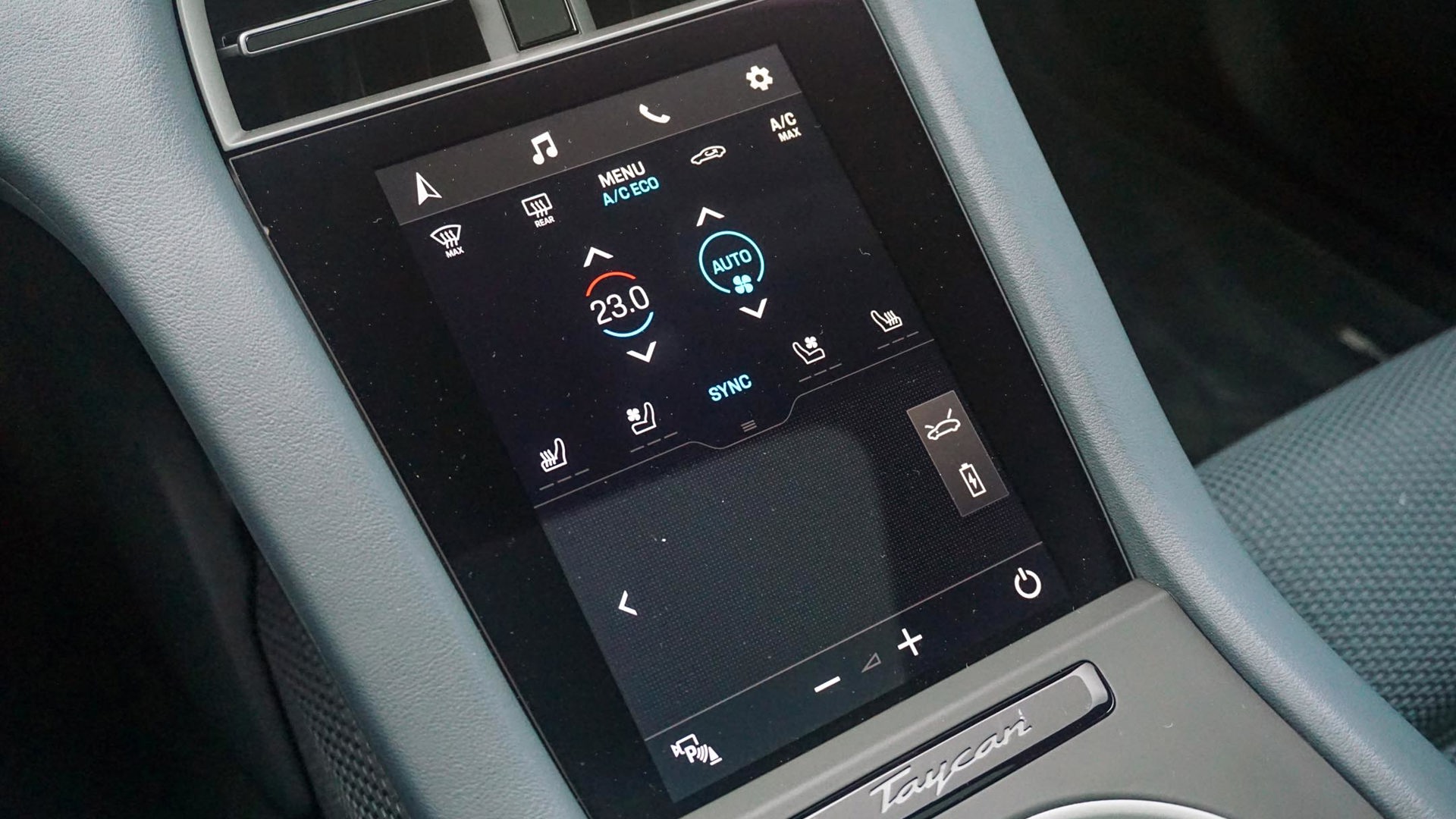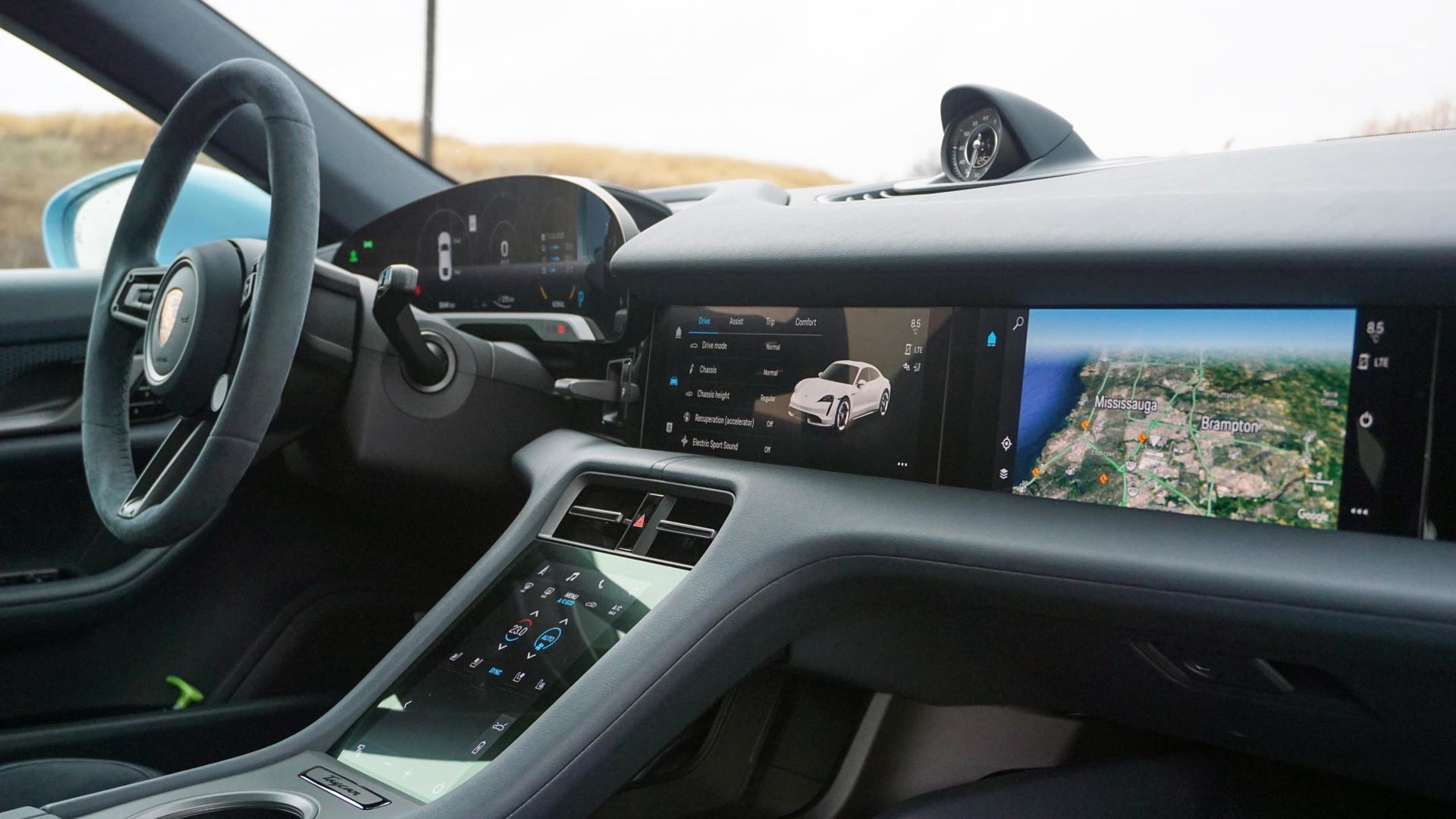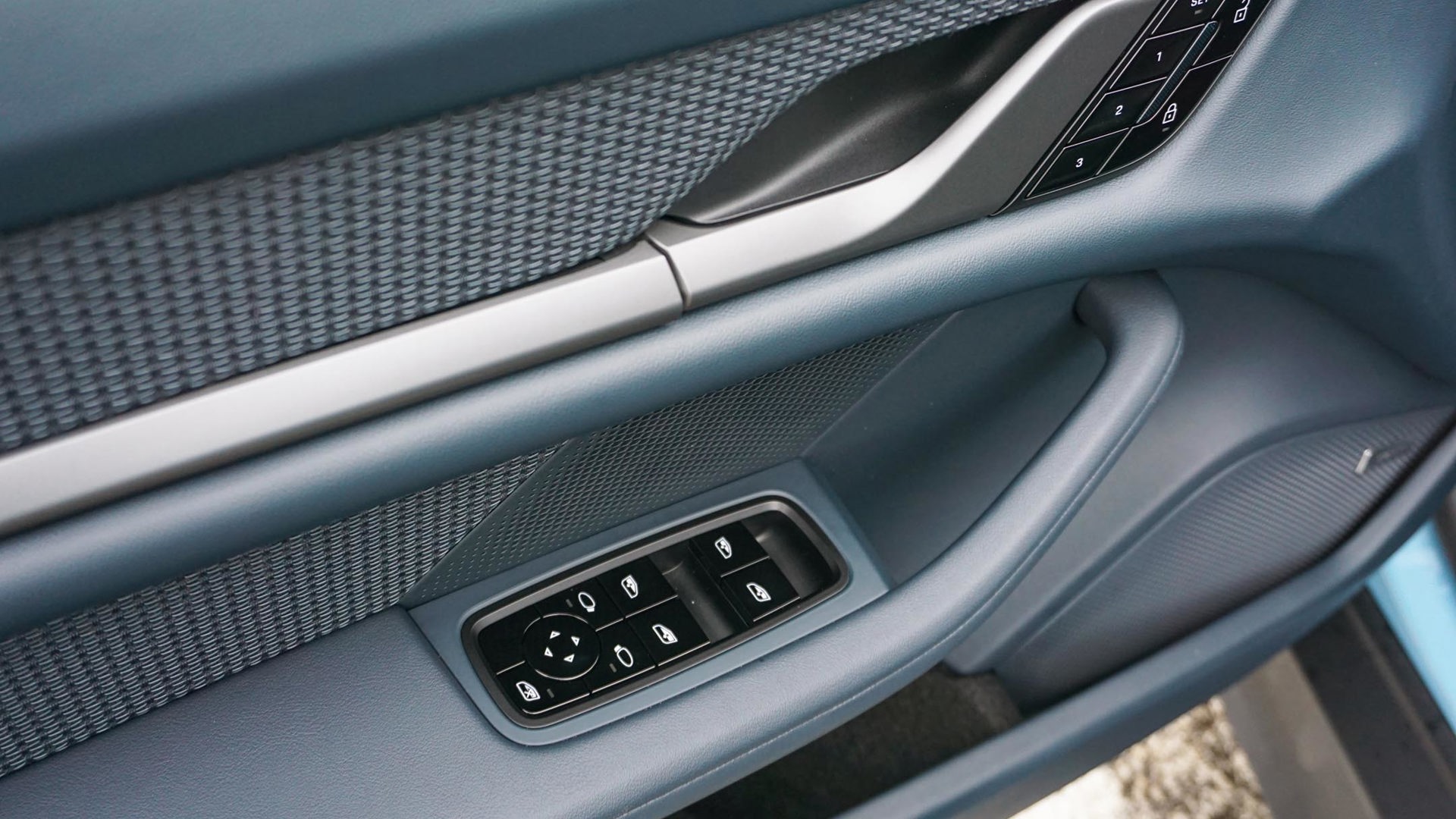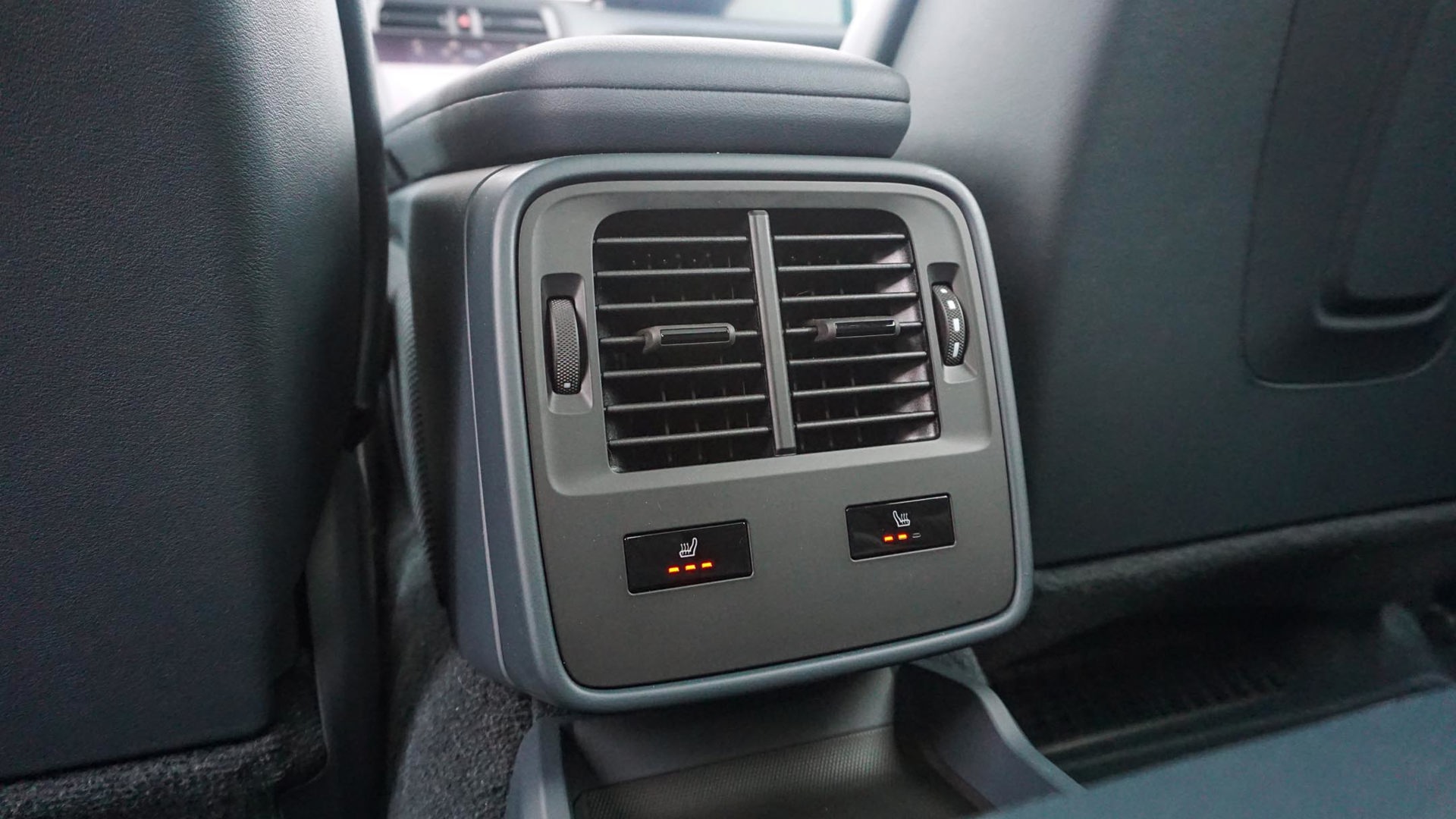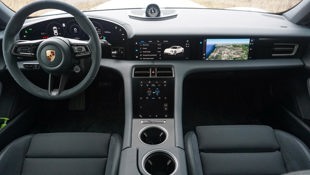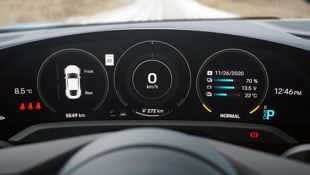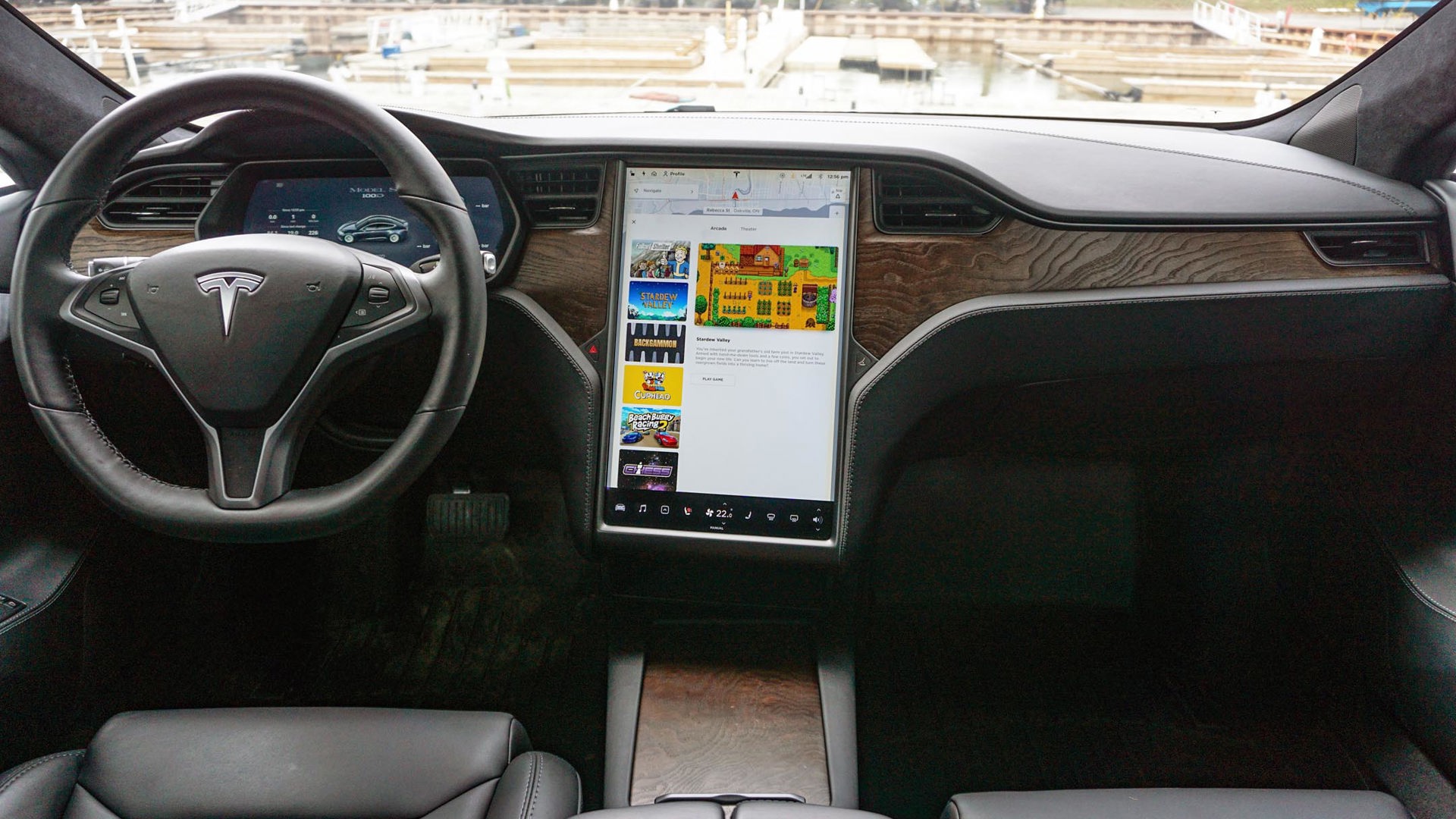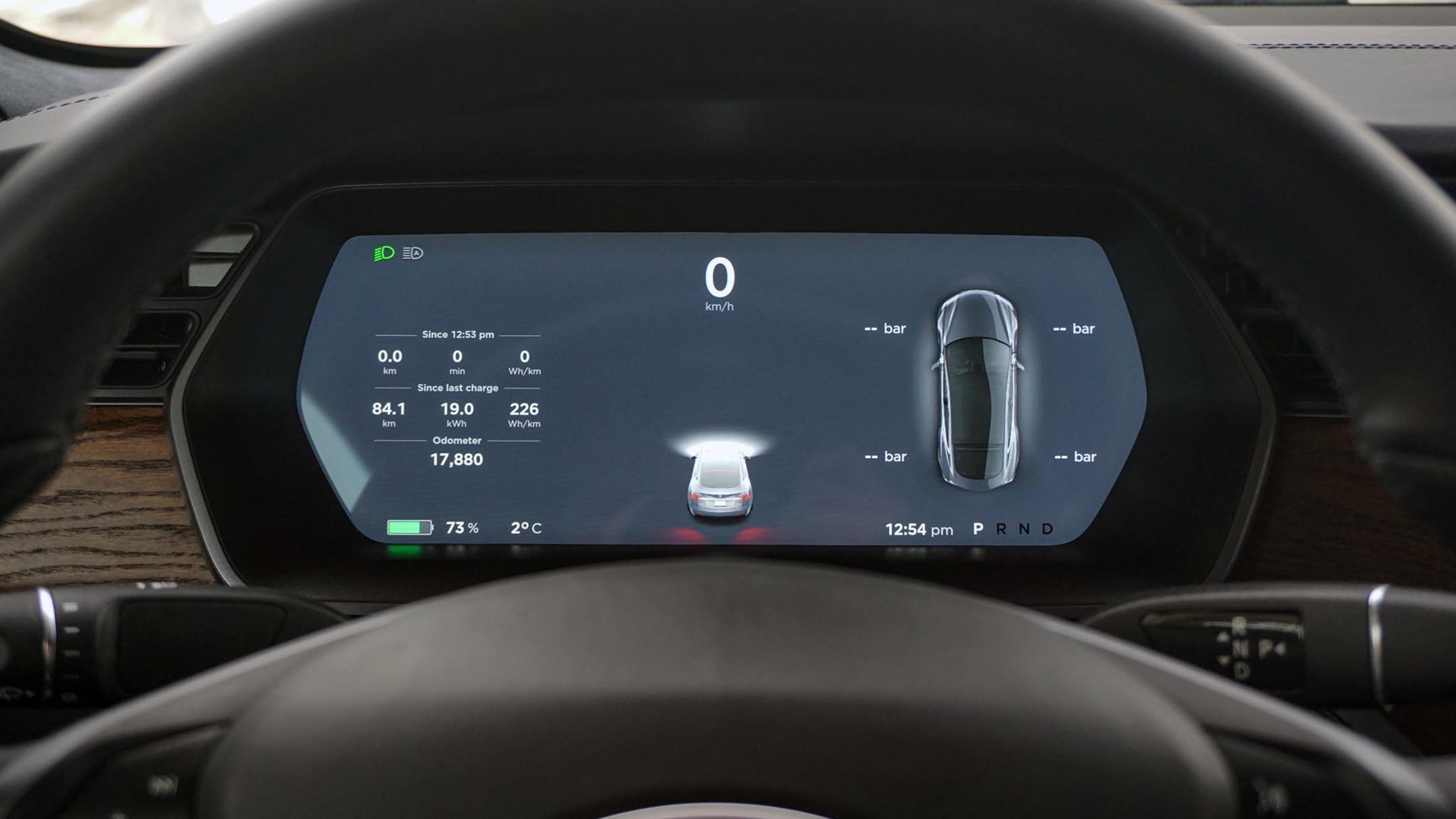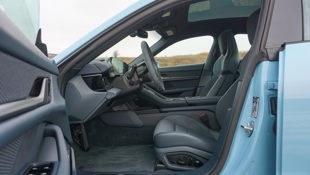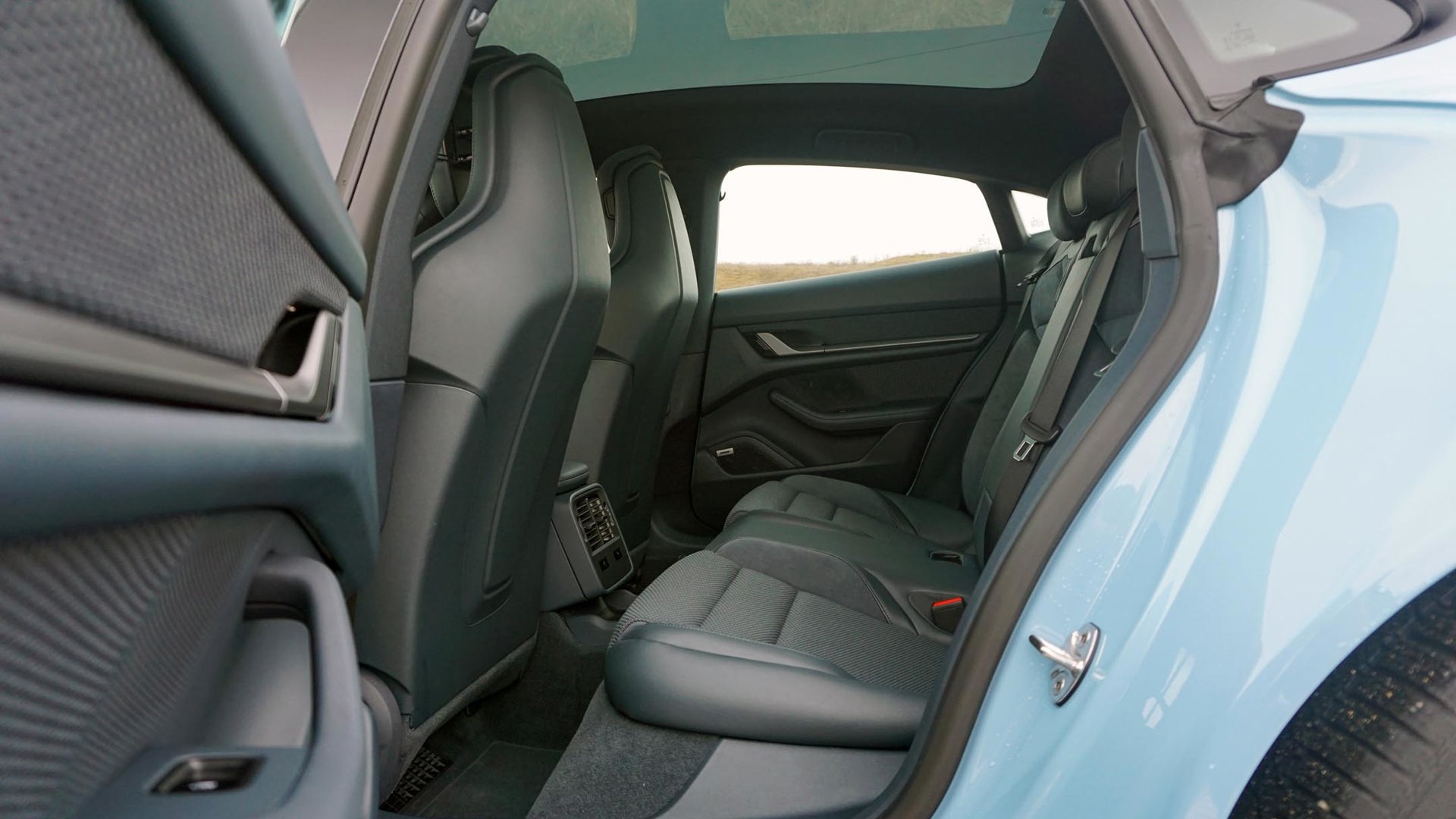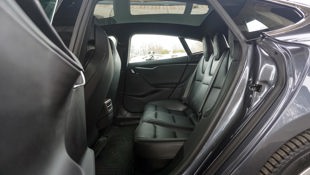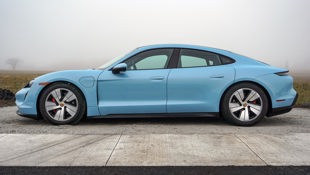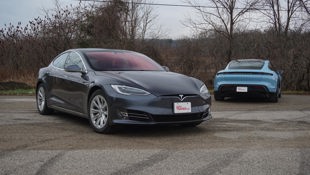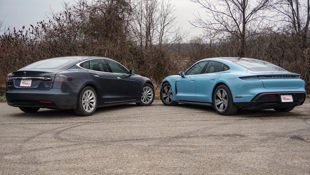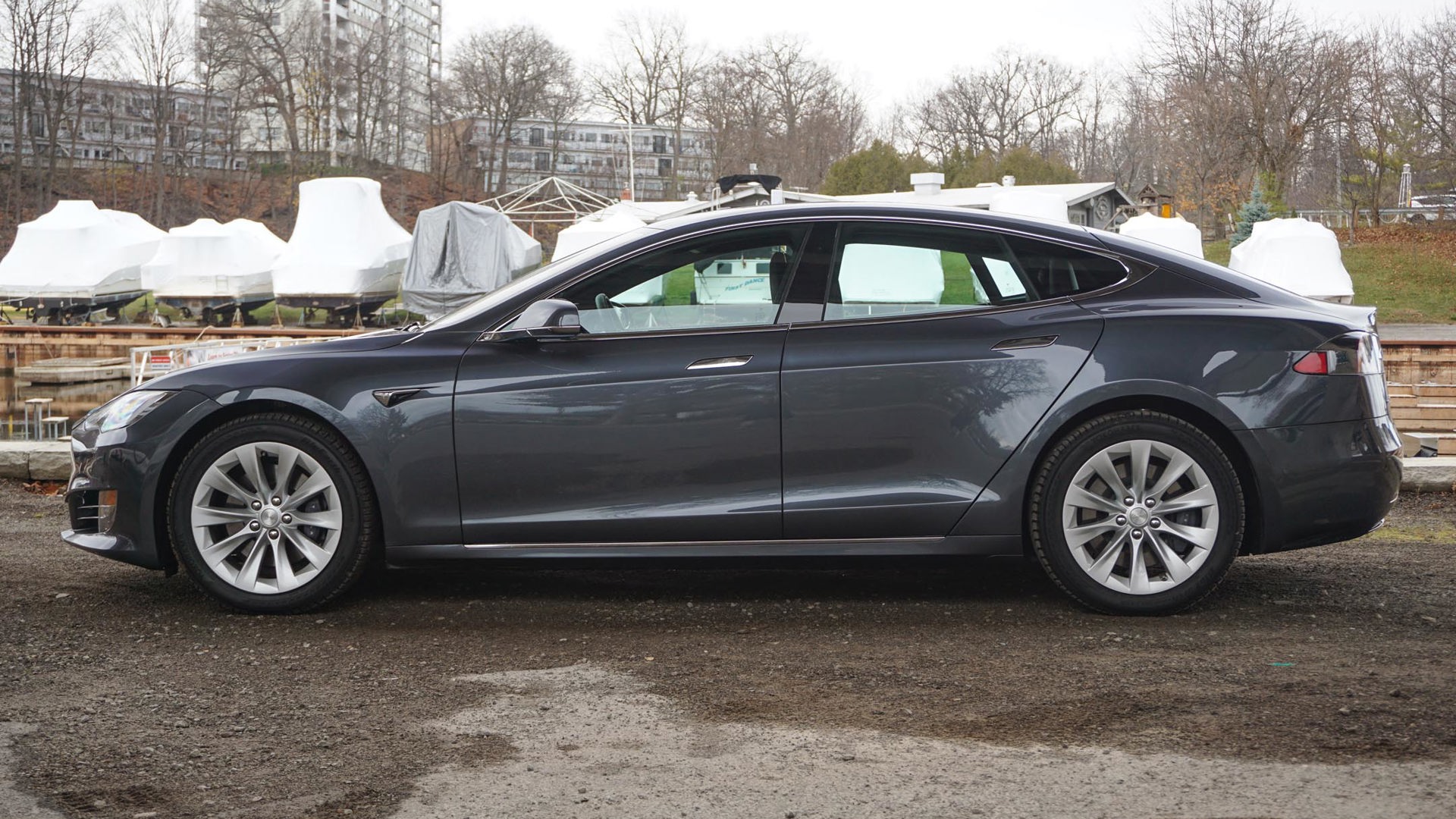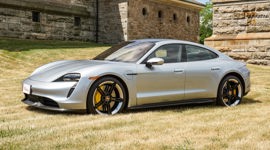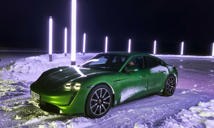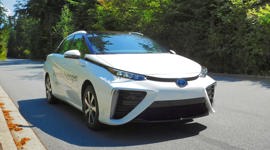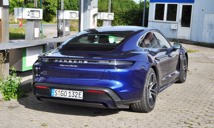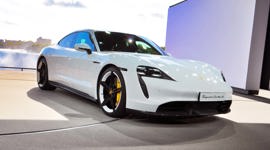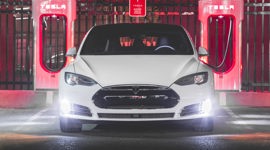Comparison Data
|
2020 Porsche Taycan 4S
|
2019 Tesla Model S 100D
|
|---|---|
|
Engine Displacement
360 kW
|
386 kW
|
|
Engine Cylinders
N/A
|
N/A
|
|
Peak Horsepower
483 hp (562 hp w/Launch Control Overboost)
|
483 hp
|
|
Peak Torque
479 lb-ft
|
487 lb-ft
|
|
Fuel Economy
3.5 / 3.3 / 3.4 Le/100 km cty/hwy/cmb; 30.9 / 29.5 / 30.2 kWh/100 km cty/hwy/cmb
|
2.3 / 2.3 / 2.3 Le/100 km cty/hwy/cmb, 20.7 / 20.5 / 20.6 kWh/100 km cty/hwy/cmb
|
|
Cargo Space
81 L front; 407 L rear
|
745 L
|
|
Base Price
$119,400
|
$110,700
|
|
A/C Tax
$100
|
$100
|
|
Destination Fee
$1,500
|
$1,200
|
|
Price as Tested
$165,510
|
$114,000
|
|
Optional Equipment
$44,510 – Premium Package, $8,190; Performance Package, $7,670; Performance Battery Plus, $7,500; 21-inch Wheels, $5,560; Leather-Free Interior in Blue, $4,710; Adaptive Cruise Control, $2,330; Passenger Display, $1,280; Mobile Charger Connect, $1,270; Illuminated Door Sill Scuff Plates in Black, $1,080; Frozen Blue Metallic Paint, $910; Accent Package in Dark Silver, $740; LED Matrix Headlights in Blue, $660; Heated Seats, $600; Third Rear Seat, $550; Onboard DC Charger, $520; Adaptive Sport Seats w/Memory, $490; Side Window Trim in Black, $450
|
$2,000 – Grey Paint, $2,000
|
Editor’s note: The Tesla Model S loaned to autoTRADER.ca for this comparison was provided by Porsche Canada. While unconventional for an automaker to loan a competitor product to members of the media, it was deemed appropriate given Tesla does not provide access to its vehicles for evaluation. The car was taken as a trade-in at a dealership owned by Porsche Canada. It has not been modified or altered in any way.
This past summer, as NBA players were bubbling in Florida and The Last Dance continued its run of popularity on Netflix, an intense debate raged on social media.
Who’s the better basketball player – Michael Jordan or LeBron James?
Of course, it’s an impossible question to answer, but that didn’t stop countless ex-athletes and armchair analysts alike from weighing in. Perplexing though it may be, it makes perfect sense. Both defied expectations from the jump, and forever changed the way we look at the game of basketball.
Ladies and gentlemen, before you is the automotive equivalent of that very debate: the Porsche Taycan versus the Tesla Model S. Only this is an argument that’s possible to put to rest after some rigorous testing – and a whole lot of fun.
Power
Porsche’s first all-electric car is offered in three distinct flavours, each more powerful than the last. For the purposes of this comparison, we looked at the entry-level Taycan 4S, which still packs a sizeable punch. Much like the menacing Taycan Turbo S that spins up as much as 750 hp, this version employs a pair of electric motors – one to power each set of wheels. Together they make 429 hp with the standard 79.2-kWh battery pack, or 483 hp with the upgraded 93.4-kWh unit found in the version tested here.
Of course, this is an electric car, which means all that power – not to mention the 479 lb-ft of torque generated with overboost – is available the instant it’s asked for. The powertrain setup is also unique in that each motor gets its own transmission. In the front is a single-speed unit that’s typical of an electric vehicle (EV) such as this, while the rear wheels use a two-speed gearbox aimed at improved acceleration. As such, this sedan will launch from a standing start to 100 km/h in four seconds flat. It might not be quite as quick as its compatriots in the Taycan lineup, but that’s still mind-bending for a car that tips the scales at 2,220 kg (4,894 lb).
Meanwhile, the Tesla Model S tested alongside the Taycan is of the 100D variety – a version that’s no longer built (the car in this comparison dates from 2019 with approximately 18,000 km on the odometer). Still, output from its twin electric motors is stout, making the same 483 hp as its rival here to go along with 487 lb-ft of torque. That helps the Model S sprint to 100 km/h in an estimated 4.4 seconds, though if you forget the stopwatch at home it feels just as quick as the Taycan, slinging occupants into their seatbacks with the same sensation. And if that’s not enough, newer versions of the Model S eclipse those numbers with ease, including an outrageous 1,100-hp car that’s apparently capable of getting up to highway speed in a little more than two seconds.
Taycan: 10/10; Model S: 10/10
Driving Feel
There was a reluctance from your humble author to compare these two based on their vastly different approaches to performance. Both are quick, yes; but the Taycan is a Porsche, and the Model S, well, isn’t. Climb behind the wheel and there’s a specialness that most other cars simply can’t match. It’s a connection to what’s happening that’s distinct, and it’s instantly felt in the way the Taycan drives.
Despite the mass that’s being moved, the Taycan feels every bit the sports car a Porsche should, electric or otherwise. While the version tested here was fitted with upgrades that amp up its performance acumen – rear-wheel steering; adaptive dampers; torque vectoring – they only serve to enhance what’s already an incredibly capable machine.
Sure, the Taycan is bound to bring smiles from stoplight to stoplight, but it’s just as thrilling when hustling through winding roads. The steering system is simply superb, communicating what’s happening beneath the wheels in ways an all-electric setup simply shouldn’t, while the brakes slow the more than two-tonne sedan in a hurry and with progressive pedal feel. Yet without the raucous choir of encouragement from a flat-six to contend with, the Taycan is just as satisfying to cruise around in quietly, maximizing efficiency instead.
The demeanour is much different in the Tesla, presenting as a premium car that happens to be hilariously quick. This particular version isn’t classified as a performance model, and that’s a fundamental difference between the two brands that’s hard to ignore. Porsches don’t need such designations; there are expectations that come with the brand’s badge, and it’s consistently up to the challenge. For Tesla, it’s missing that same sort of baseline performance prowess.
The Model S feels out of its element when pushed, preferring sedated driving to sensational. Not that it isn’t capable of answering the call from time to time, but its specialties lie elsewhere.
Taycan: 10/10; Model S: 7/10
Fuel Economy
Take efficiency, for instance. Tesla remains untouched in an industry that’s been chasing its battery technology for years, and this Model S is a prime example. Despite the latest versions of the Model S exceeding its estimates in massive ways, this 100D still boasts a superior range to the Taycan, not to mention just about every other EV on the market. With its 100-kWh battery pack, this version is good for an estimated 539 km of emissions-free driving. Better still, the version that replaces it – the so-called Long Range Plus – is good for about 100 km more on a single charge.
By comparison, the Taycan 4S is estimated at just 327 km of driving range, though it appears a rather conservative number, with real-world results pushing closer to 400 km between charging. The Taycan also benefits from a higher system voltage – at 800 volts, it’s twice that of the average EV – and a higher maximum charging capacity of 270 kW. However, hooking up to a charging station that comes anywhere close to that is a different story altogether.
Either way, with testing taking place in late November and both cars sporting winter tires, real-world results were far more similar than we would’ve predicted. Covering 130 km in the Model S with the HVAC system pumping warm air into the cabin and the heated driver’s seat and steering wheel running saw 41 per cent of the battery sapped. Similarly, the Taycan managed 125 km and used up 38 per cent of its battery, though the comfort features weren’t used with the same disregard for their impact on range.
Taycan: 8/10; Model S: 9/10
User Friendliness
When it was time to charge, the Tesla was a cinch. With a longer history of electrification on its side, the automaker’s charging network is an expansive one, with more than 100 of its so-called supercharging stations across the country. Find one and it’s a simple matter of plugging in; from there, the car handles the rest, with no sign-in or credit card required - it simply charges whichever Tesla account is connected to the car. Unfortunately, charging took longer than expected each time we stopped at a charging station, the Model S requiring longer than estimated to top up its battery in the chilly late-November temperatures.
As part of the launch of the Taycan, Porsche has partnered with Electrify Canada for access to its quick-charging network that can maximize the full potential of the car’s electrical system. Not only does every Taycan sold here come with a three-year subscription to the network that allows unlimited 30-minute sessions (separated by an hour), but the company’s most robust chargers can add 100 km of range in about five minutes.
Unfortunately, finding a charger is far from easy, with only 14 in operation across the country at the time of this writing. That’s up from the six that were online in the summer, but it’s far from ideal. Find one and it takes quite a bit of back and forth between the touchscreen on the station and the smartphone app just to get the charging started. Making matters worse, the most we were able to eke out of the two different charging stations we used during testing was 60 kW – nowhere near the car’s peak of 270 kW.
In the Taycan, there’s also the pesky matter of overcomplicated controls that take some getting used to, and even then can still cause frustration – especially on the go. While your author had something of a leg up on the learning curve after spending time with the Taycan earlier in the year, autoTRADER.ca Editor-in-Chief Jodi Lai wasn’t as lucky, commenting on the perils of the excess of touch controls that are used for just about everything inside.
A console-mounted display manages tasks like HVAC and audio controls, while a centralized touchscreen above it is overwhelming in its array of thumbnails and functions. Then there are capacitive touch controls on either side of the digital gauge cluster, while the model tested was also fitted with an optional display that puts yet another touchscreen in front of the passenger seat, duplicating the functions found through the main unit. It’s a lot to get used to, even for those with previous Porsche experience.
The Model S might have more touchscreen real estate inside outright, but it’s centralized to a massive single display that’s easier to operate (though we wouldn’t mind seeing a few more physical controls). It may be chock-full of gimmicks – video games, streaming services, and a Microsoft Paint-like doodling app are just some of the frills included – but it takes less time to master what’s going on.
That’s something of a theme for the Tesla that the Taycan is missing, because no vehicle before or since the Model S was introduced to the market – eight years and counting – has made all-electric driving this easy. The brakes are regenerative, yes, but there are only two settings to switch between; there are no paddles to fiddle with like there are in some other EVs. Different drive modes are also included, but they’re simple and self-explanatory. Even the way the car turns itself on and off each time the driver enters and exits makes the user experience as hassle-free as possible.
Taycan: 8/10; Model S: 10/10
Practicality
Other issues materialize with the Taycan’s sports car-like approach to electrification. Sleek and low, it looks fantastic but becomes a pain to climb into and out of each day. While such a sacrifice is perfectly fine for a second – or third, or fourth – vehicle, it’s less ideal for daily use. It wouldn’t be fair to describe the space inside as cramped, but it’s certainly not as roomy as the Model S. (Regardless, both cars suffer from terrible outward visibility through their rear windows.)
Both on paper and in practice, the Tesla offers more outright storage room than the Taycan, though the latter is the superior car when it comes to interior storage. In one of the most bizarre oversights in recent automotive interior design history, the Model S does without pockets in any of its four doors, and relies on a single console bin for small-item storage. And while it benefits from a unique divider system, it’s not as useful as its size would suggest. There are also a pair of cupholders, but they’re positioned precisely where the elbows of front-seat occupants land naturally, rendering them useless.
Inside the Taycan, there are generous door pockets up front, a pair of cupholders on the centre console, a small armrest bin at the back of it, and, since there’s no shift linkage to worry about, a sizeable cubby beneath the console. Overall, the cabin comes across as the more thoughtfully designed of the two.
Taycan: 8/10; Model S: 8/10
Styling
Anyone who says the Model S is objectively more attractive than the Taycan is simply lying. Not that Tesla’s flagship sedan isn’t stylish in its own right, but it simply can’t hold a candle to Porsche’s futuristic four-door. In fact, few other cars on the road can.
Further strengthening the Taycan’s case was the court of public opinion, which rendered its verdict early and often. Not many vehicles we’ve tested have garnered attention quite like the Taycan, and that extends back to the silver Turbo S tested earlier this year. However, this particular tester – finished in Frozen Blue Metallic paint – turned heads like a sadistic chiropractor, and proved to be quite the conversation-starter.
Sadly, few of those observers got to glimpse this car’s cabin, which might be its best feature. Pricey though the leather-free upgrade may be at $4,710, the navy motif seen here looks and feels fantastic, and is the perfect contrast to the soft-blue exterior. While Porsche is no stranger to colourful cabins, this has to be among the nicest spaces out there.
Then there’s the Model S that’s boring inside – not just in contrast, but in general. While the open-pore wood on the dash is a nice touch, there’s little else to get excited about. The central display provides a nice focal point, but the rest of the interior design has the character of Eeyore holding an iPad.
Taycan: 10/10; Model S: 8/10
Comfort
The seats in the Model S might not look like much, but they’re certainly comfortable. Thick lower cushions provide plenty of thigh support, while the seatbacks feature just enough contouring to keep occupants nestled snugly in place. However, the leather they’re wrapped in isn’t particularly impressive – it feels more Mercedes-Benz CLA-Class despite its S-Class price tag – and, while heated front and rear, they don’t come ventilated.
Despite that disappointment, the Model S is a well-executed premium sedan. The cabin might not feel like a six-figure space, but it’s quiet and comfortable. The air suspension does well to enhance that serenity, smoothly rolling down the road unperturbed by outside interference.
The Taycan is far sportier by contrast, though it’s still a capable cruiser in its own right. It, too, benefits from an air suspension system, though it’s tuned with performance in mind. Where the Model S might be better for commuting duty or making the drive up to the cottage with the whole family in tow, the Taycan is the kind of car begging to be taken on that weekend trip to wine country.
The Taycan’s seats are nearly as comfortable as the Tesla’s – though much like the cars themselves, they’re vastly different in execution. Even the standard seats are sportier to sit in, while the upgraded units tested feature deeper bolstering to wrap around those inside. Front and rear heat is a $600 upgrade, while front-seat ventilation can be added on its own ($970) or as part of the Premium pack ($8,190).
Taycan: 10/10; Model S: 10/10
Features
Of course, this is a Porsche, after all, so high-dollar options packages are to be expected. That also means this 4S version of the Taycan isn’t especially well-featured from the jump, instead requiring quite a few upgrades to get it to the point seen here.
Paying extra for heated seats in any car these days is a big ask, and that’s especially true for one with a starting price of nearly $120,000. In fact, most of what makes this particular Taycan so impressive – its blue paint, beautiful interior, bigger battery pack, and passenger display, among others – comes by virtue of extensive add-ons. Hard though it might be to imagine, it’s fairly frill-free otherwise. That’s not especially ideal for such an expensive piece of machinery.
Similarly, the Tesla Model S isn’t exactly teeming with premium features, though there are lots of gimmicks – and they all come built into the price. Heated seats and steering wheel and the massive 17-inch touchscreen replete with all kinds of entertainment options are enough to keep everyone inside happy, and they don’t cost extra. In fact, very little does.
Taycan: 8/10; Model S: 10/10
Safety
The only option package available for the Model S is an upgraded suite of advanced driver-assist features the automaker inaccurately claims provide “full self-driving capability.” In reality, no such functionality is available for consumer use. The Model S does, however, feature a robust suite of features including adaptive cruise control, automatic emergency braking with pedestrian detection, and blind-spot monitoring, among others. It all works as expected, too, with sensors picking up other road users and adjusting accordingly. The Taycan can be fitted with a similar suite of features, though it’s not standard.
Taycan: 8/10; Model S: 9/10
Value
While it’s unfortunate that the Model S isn’t offered with ventilated seats among a few other features, it’s rare for its simplicity of pricing and packaging in the premium market. Aside from wheels, paint, and driver-assist systems, everything is built into the price. There’s no cold-weather package or upgraded stereo to option; what you see is what you get.
Back when this particular tester was bought new in 2019, the Model S 100D was priced at $110,700. The grey paint worn by this tester was an extra $2,000, while freight fees brought it up to $113,900 before tax. An equivalent version today would cost even less while providing more driving range, with the Model S Long Range Plus starting at $101,990.
Then there’s the Taycan. While its starting price of $119,400 is reasonable compared to the Tesla, it’s mostly absent of desirable features. The bigger battery pack, adaptive cruise control, and even heated seats all add to the asking price, with the version tested specced to $165,000 before the government’s share. That makes it almost as expensive as a Taycan Turbo, only without the performance.
Taycan: 8/10; Model S: 9/10
The Verdict
Ultimately, we remained divided until the bitter end, and the scoreline was as razor-thin as possible. Comparing these two also reinforced just how different they are despite the fundamental similarities they share.
First comes the Taycan, a car that there’s simply no debating the specialness of. It’s the one we most frequently fought over custody of during this comparison, the draw of the driver’s seat as undeniable as it was addictive. It’s an impressive machine, and one that raises the bar for the entire Porsche brand. But it’s also nowhere near as easy to live with as the Model S, and it’s a pricey proposition once necessary options are added.
Then there’s the Tesla Model S – a car that makes electric driving incredibly easy, and it does so with enough technology and features to remain relevant despite its relative age. It’s simply so approachable, and that’s a trait we kept coming back to throughout this head-to-head battle and beyond. Its superior range, charging network, and simplicity makes electrification look so easy – and tough to top, even for a car as redefining and revolutionary as the Taycan.
These two truly are generational game-changers – names that will be remembered for countless years to come. Just like MJ and LeBron, their greatness is undeniable. But the Taycan is like LeBron early in his career: just starting to scratch the surface of all that capability. The Tesla Model S is like Michael Jordan in the midst of his second run of back-to-back-to-back NBA championships. The Taycan might be the future king, but the Model S isn’t ready to give up the throne just yet.
